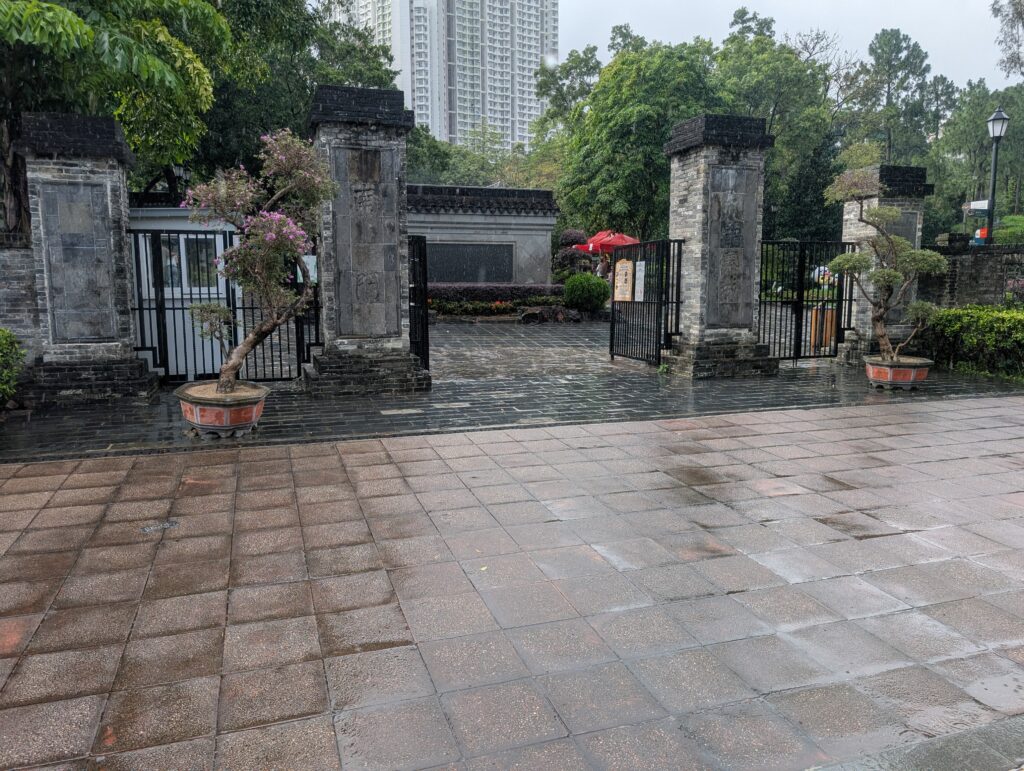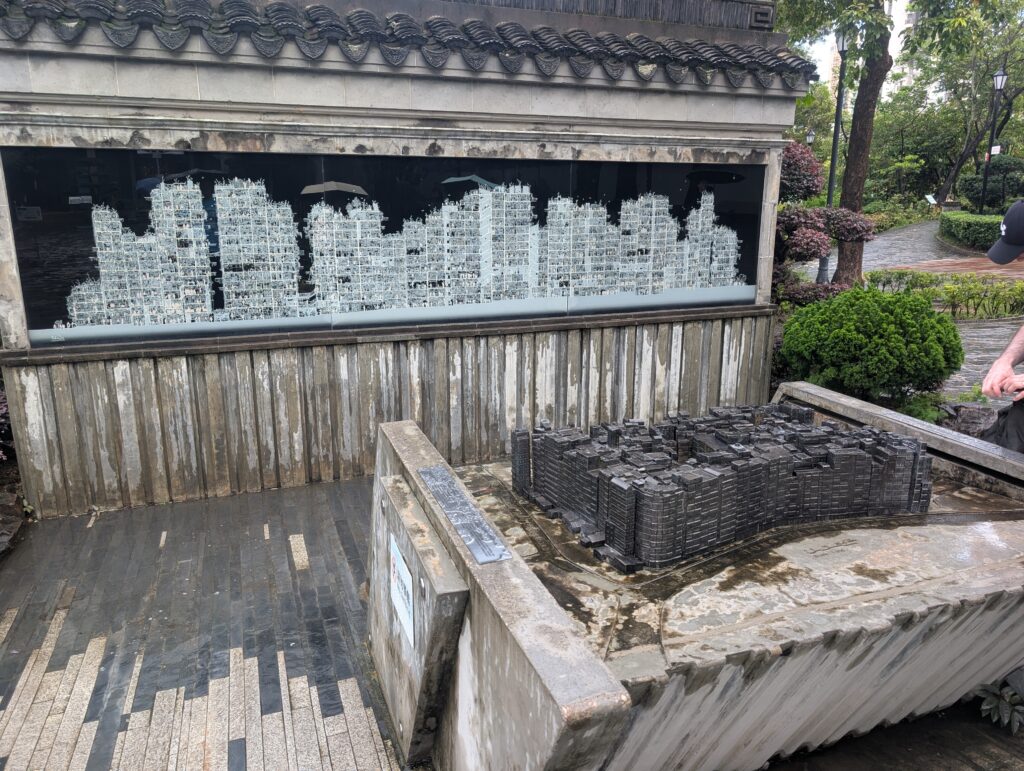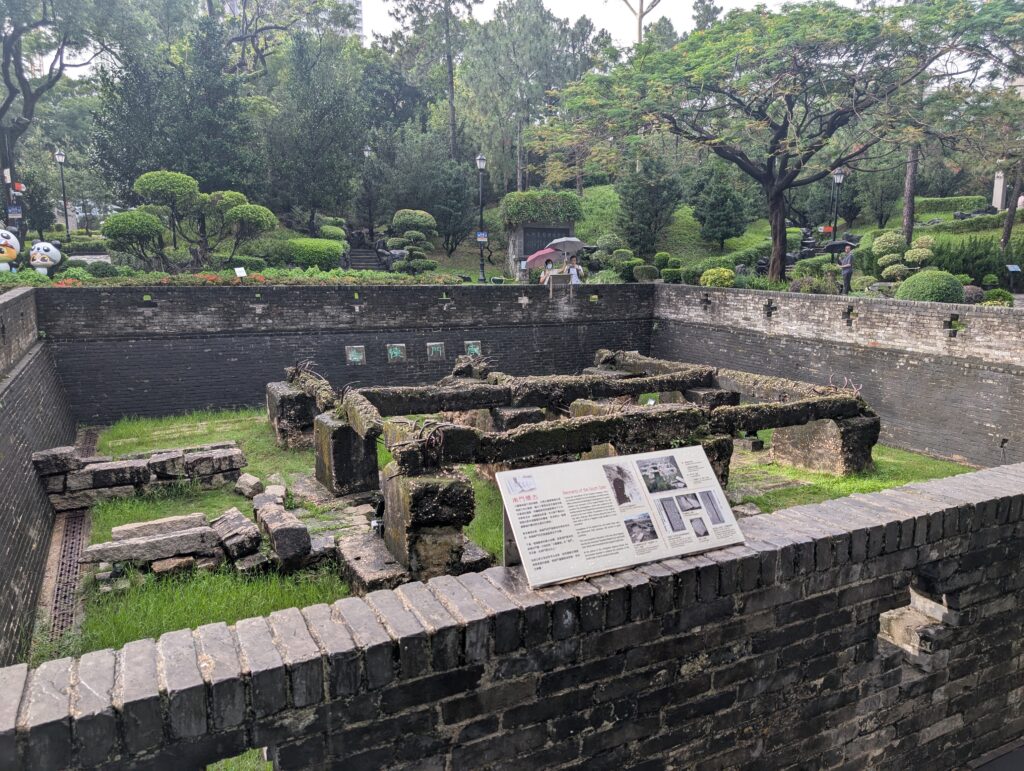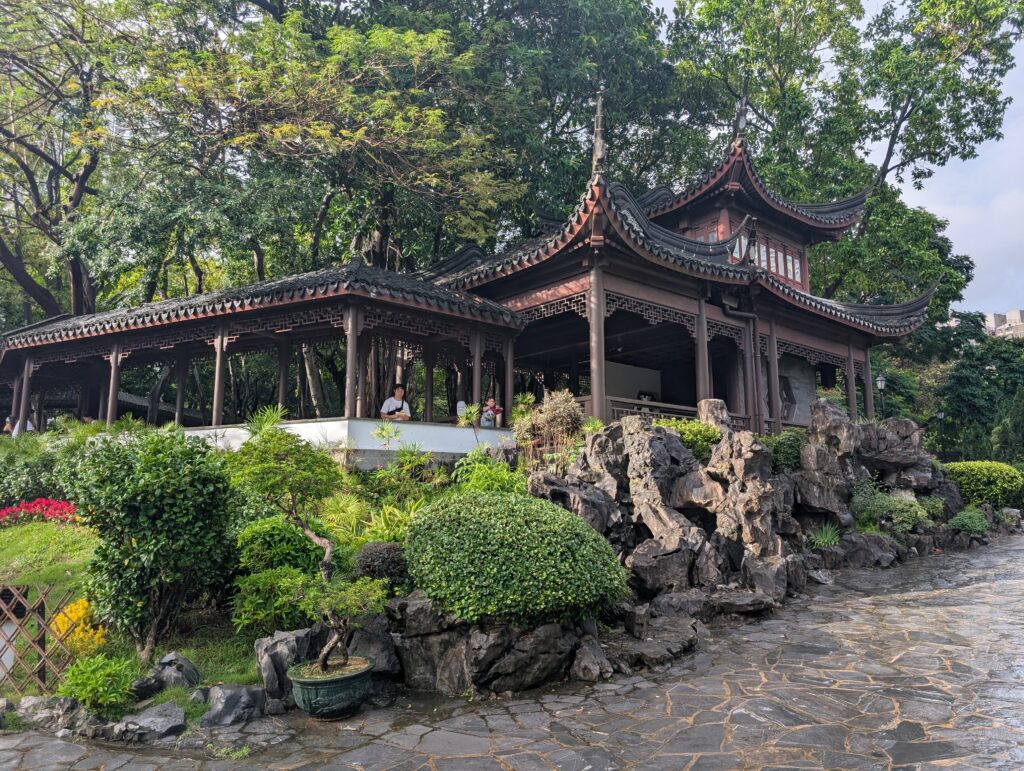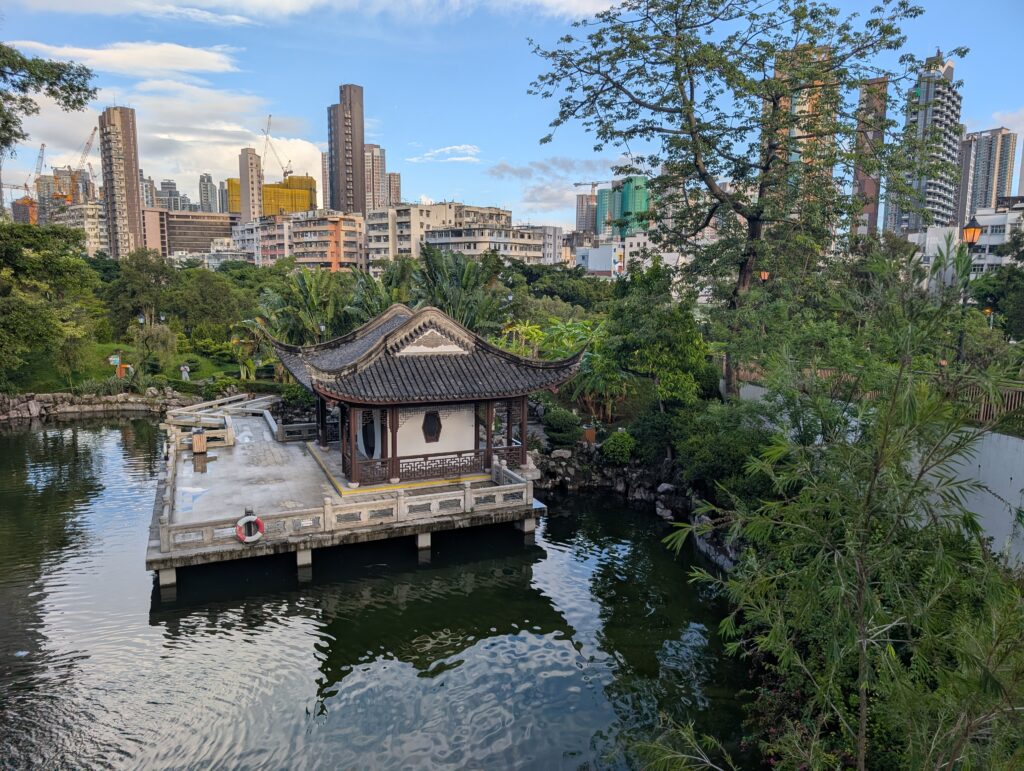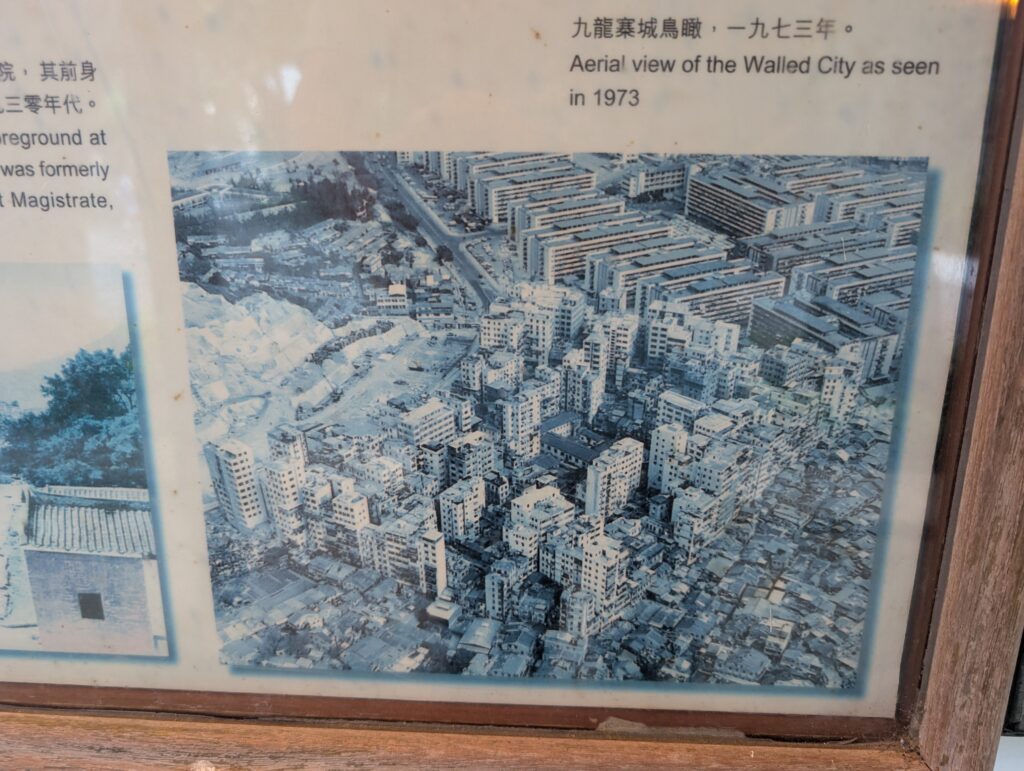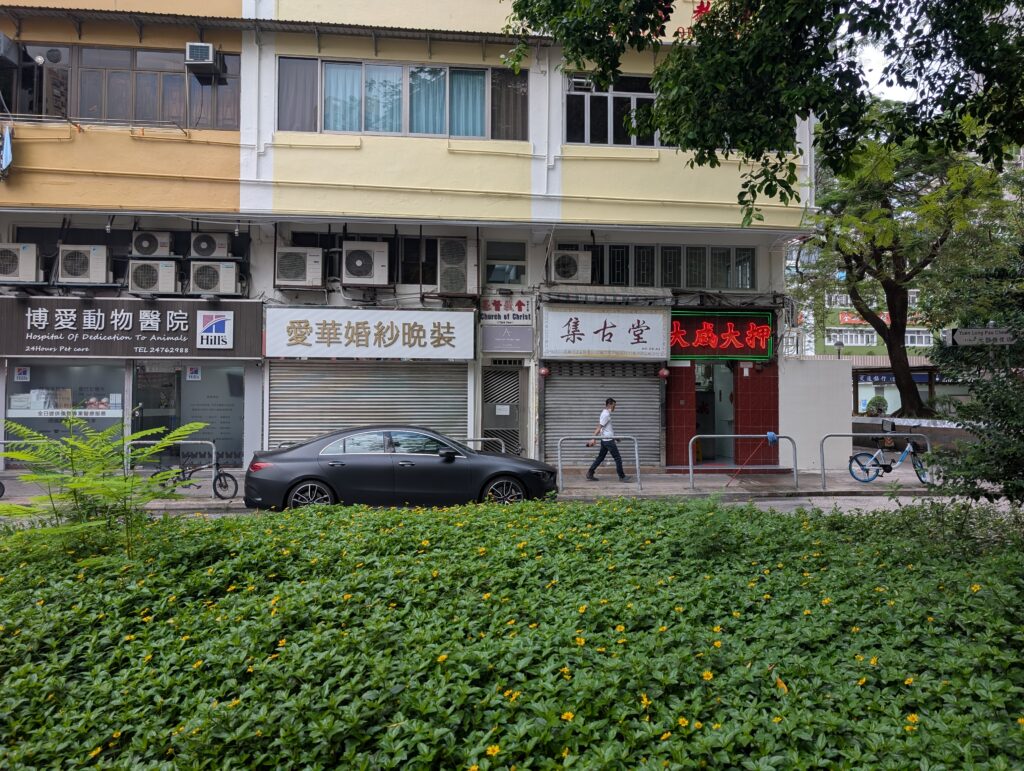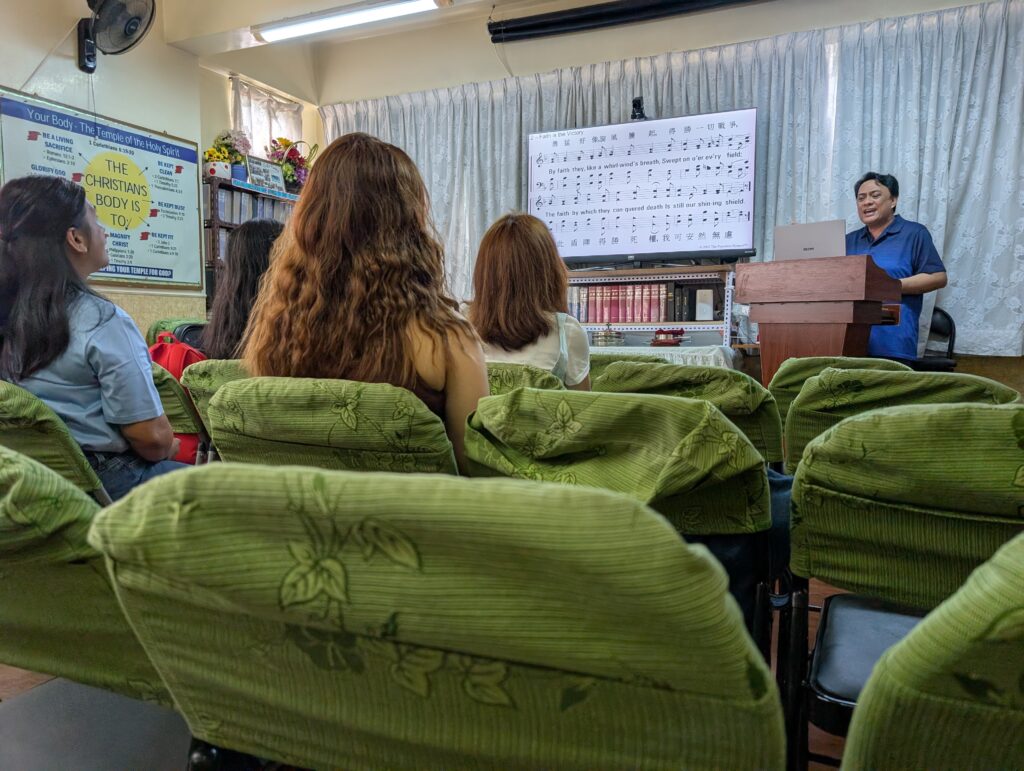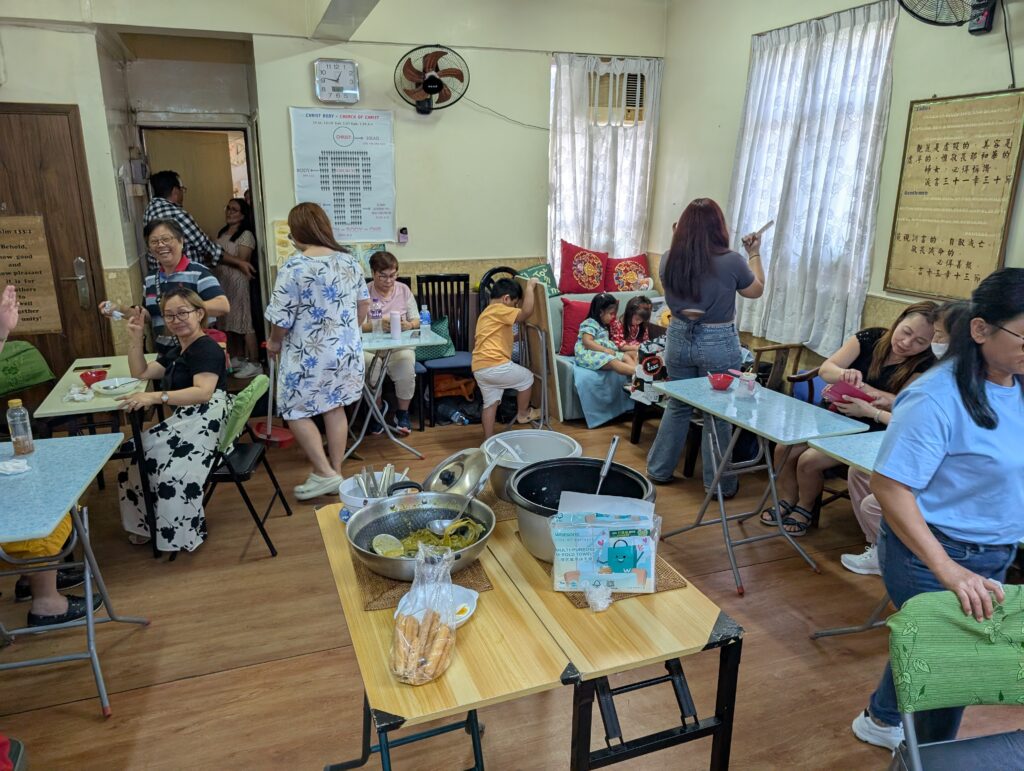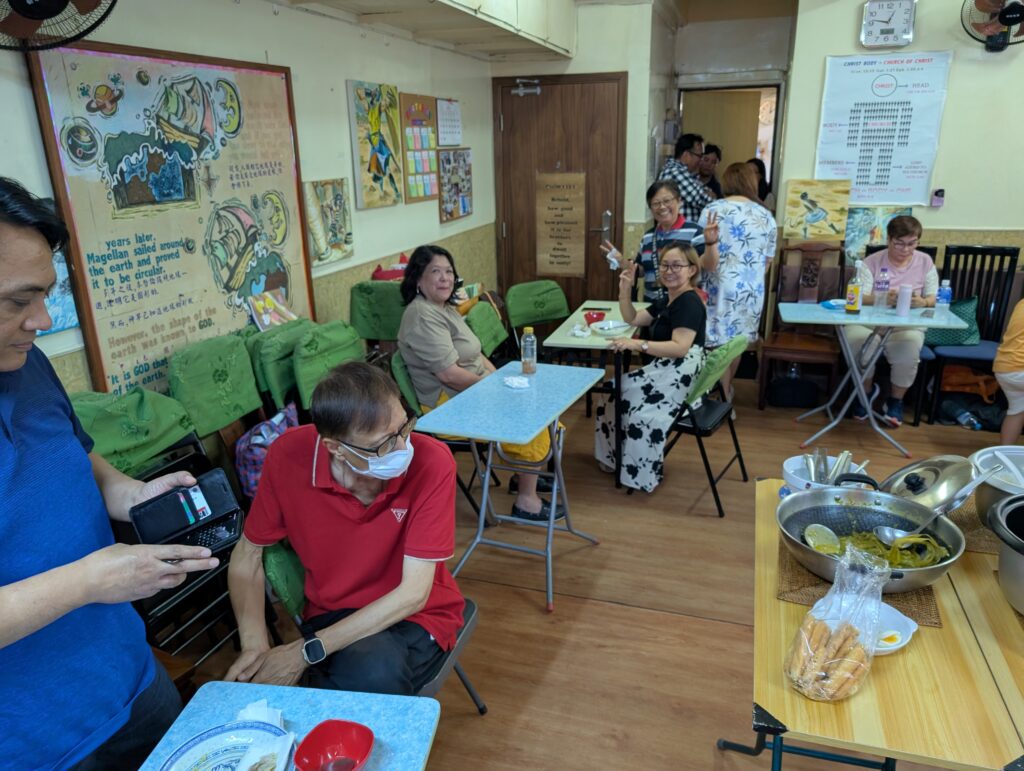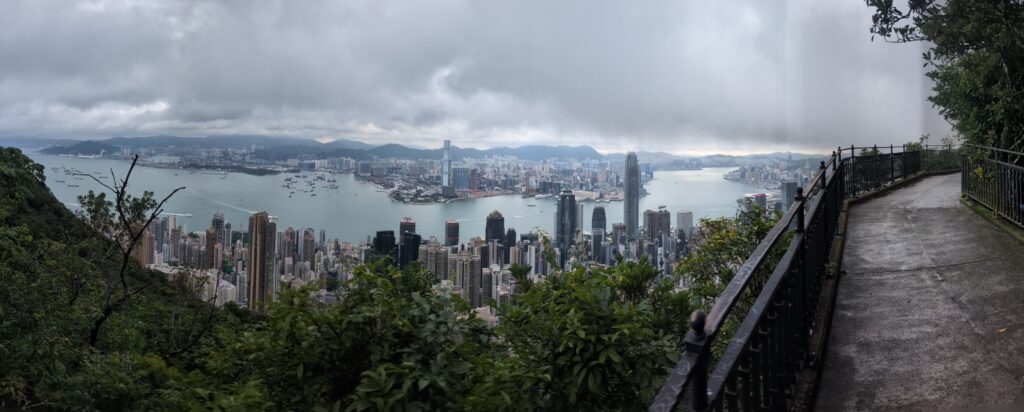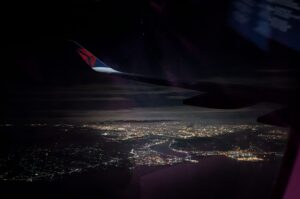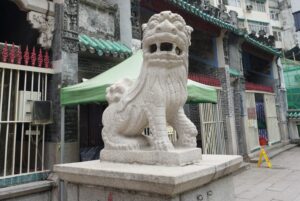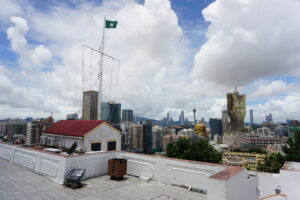Hong Kong
Introduction to the Far East
I arrived on Tuesday afternoon in Hong Kong. The MTR was easy to navigate, though the ride was a little far from the airport to my hostel in Causeway Bay. The check-in process was awkward, as I had to go to a flat on the 11th floor of a building. In the end, the hostel room was pretty nice with clean beds, hot showers, and a big locker. My check in host also recommended some places to eat. The hostel is in a very old building, but in an upscale part of town. You take an elevator between store fronts up to a high floor. The stores in my area were all newer, brightly lit up establishments. My only complaint about the hostel was that it tended to get warm during the night.
I found a row of budget restaurants one street over, most of which did not even have a place to sit down. The prices seemed slightly high compared to Taiwan, but the portion size on my first Hong Kong supper was good. I got a three entree rice plate like I would in a Chinese restaurant in America for $45HK and carried it back to my room. There were no common areas at my hostel, so eating in the room was not prohibited. The cooking tools were also conveniently available right in the room. You do lose a bit of the social element of the hostel, though, with no common areas.
I was up early the next morning. I was feeling both energetic and frugal. I decided to begin by ascending the famous Victoria Peak to take in the bird’s eye view of Hong Kong. I had read there were escalators – the largest set of outdoor escalators in the world – taking people from the waterfront areas of Hong Kong to the mid-levels. What should have been obvious never occurred to me. The escalators are running downhill in the morning, because they are for people going to work. I thought about riding the tram up to the peak, but that was going to cost about $5, and I felt spry, so I decided to hike it. The walk was about two miles and it was paved, but it was VERY steep. I worked up quite a sweat on the ascent.
Most of the businesses atop the hill were still closed at the early hour I summited. I walked a circuit around Lugard road among joggers. I hiked out to High Point West, another small peak I had to climb for a different set of views. It was all very pretty and worth the hike and climb. I never put the camera away through the entire hike. I also never stopped sweating and remained drenched all day.
(Continued)
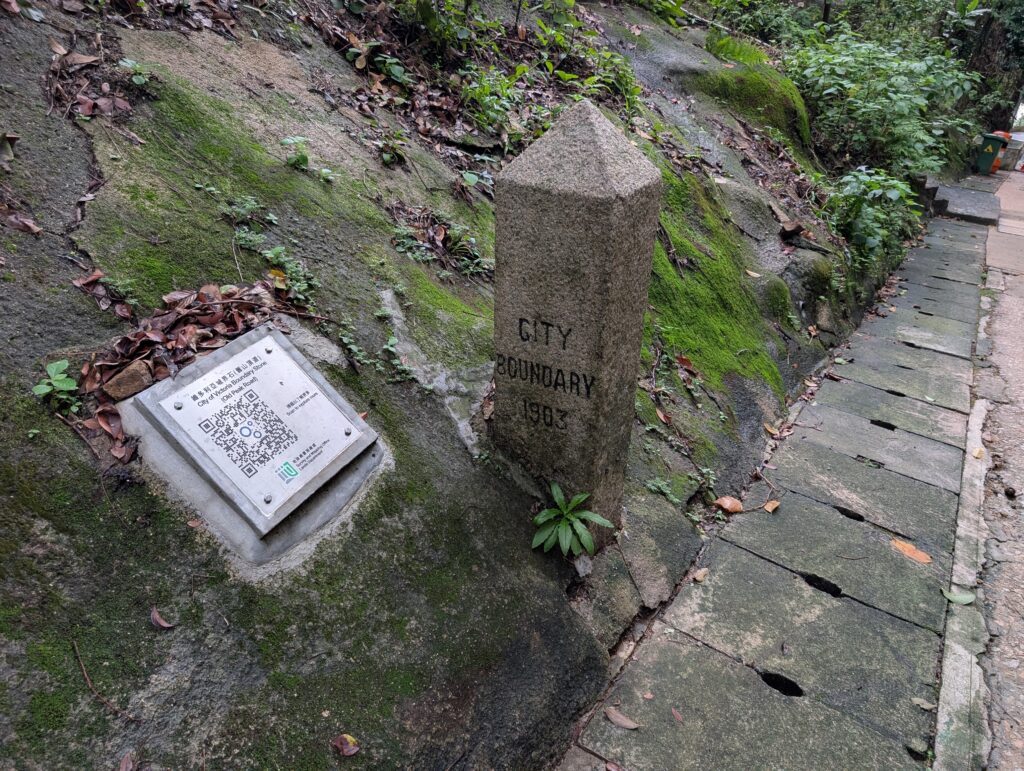
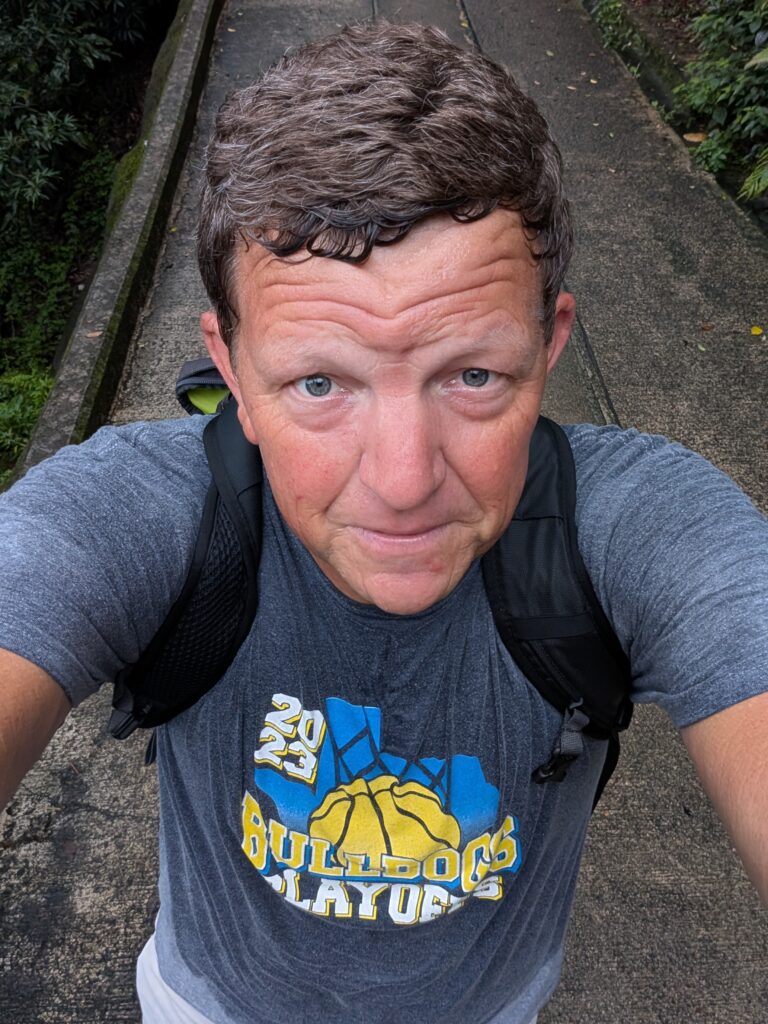
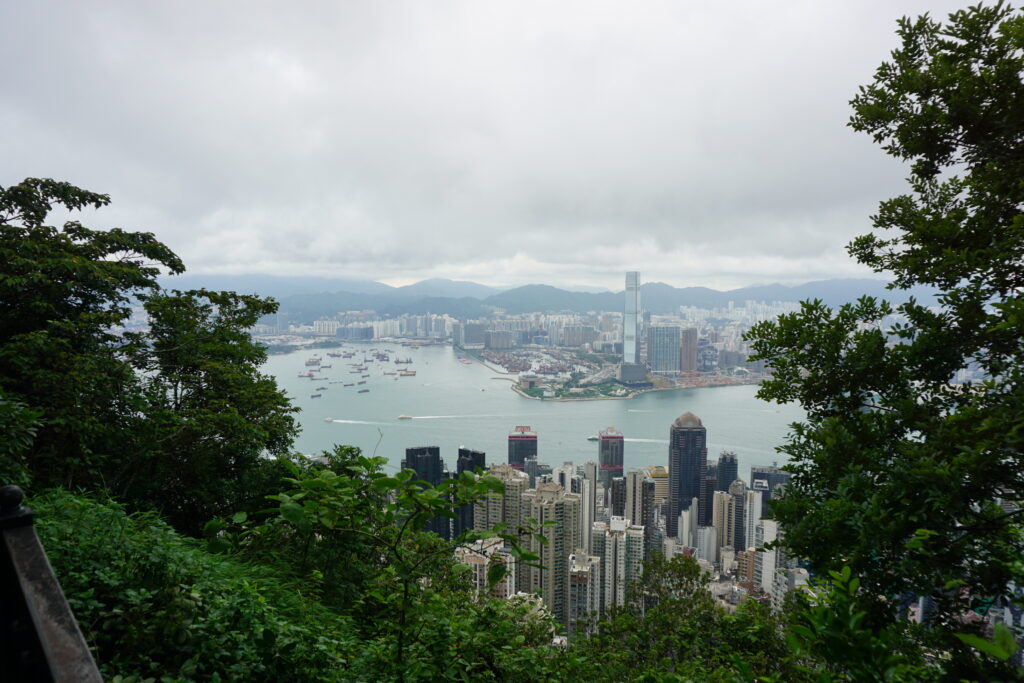
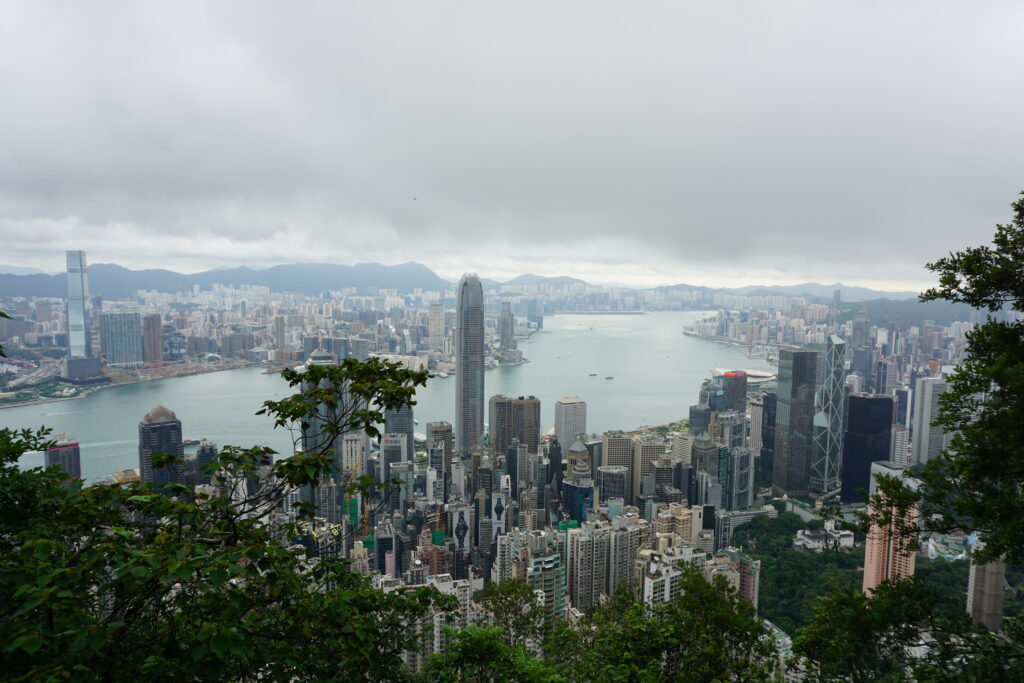
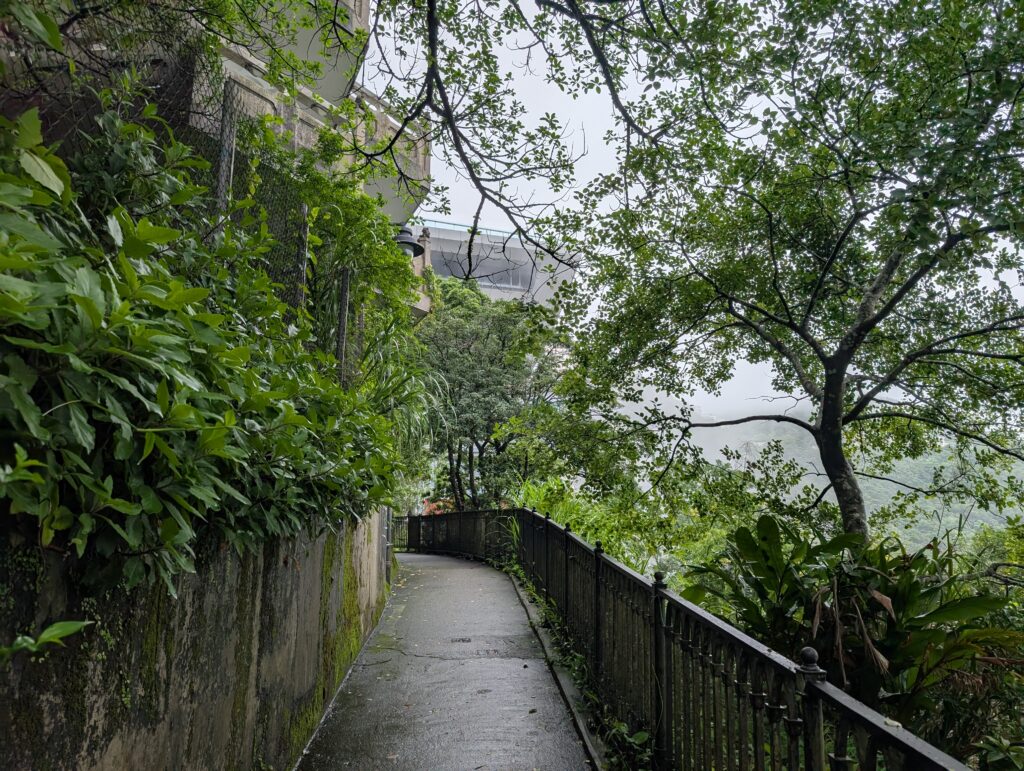
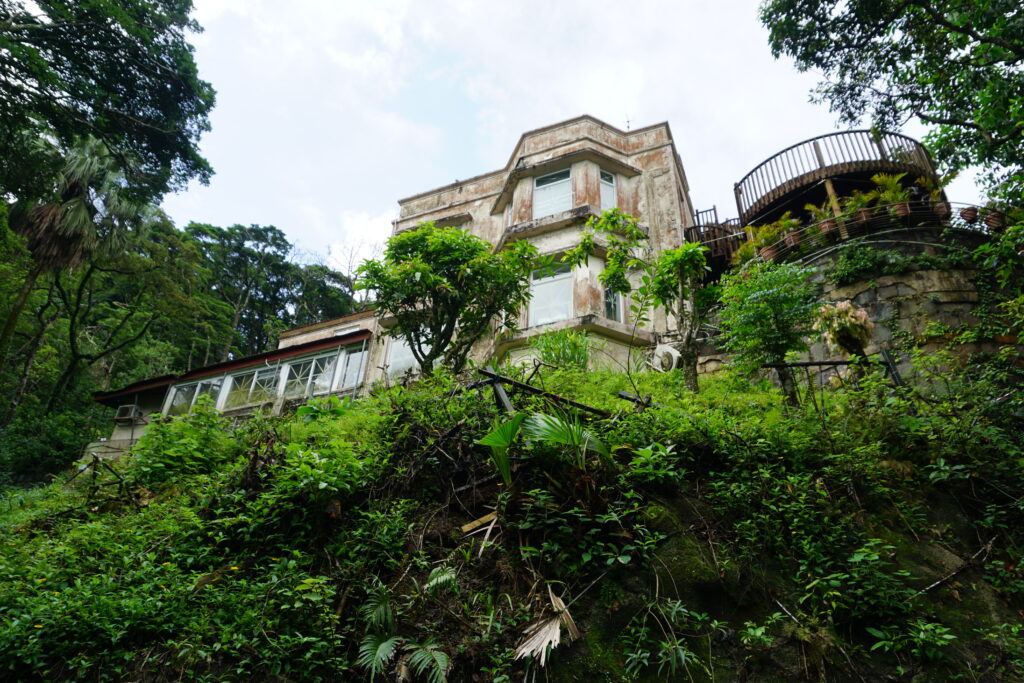
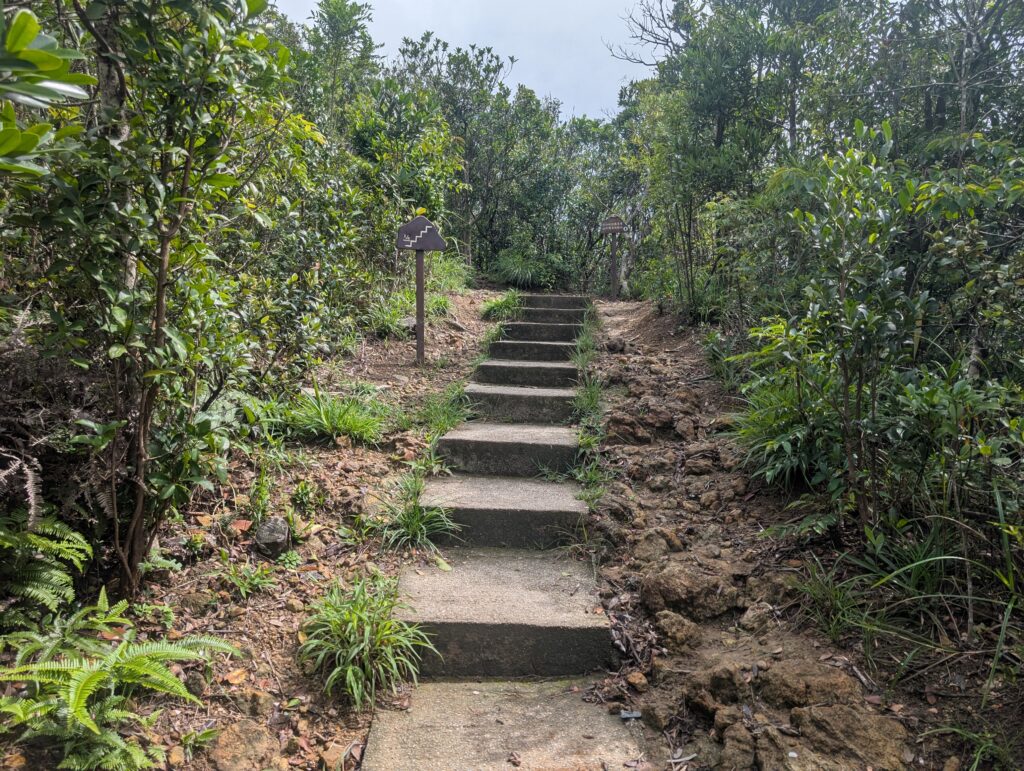
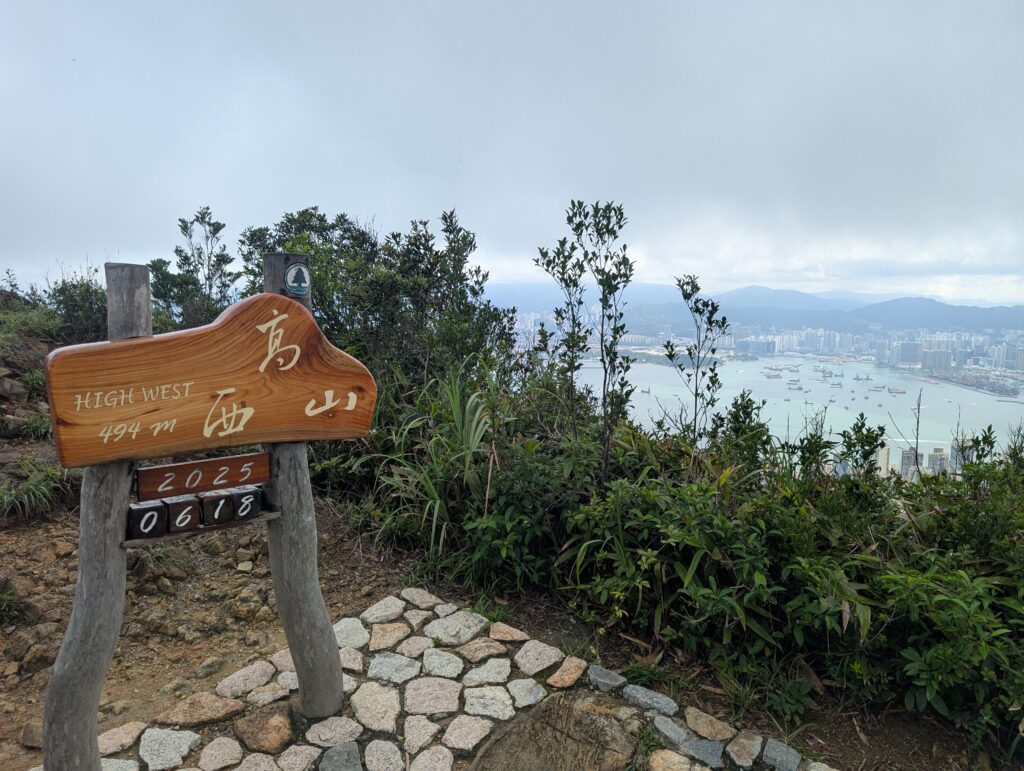
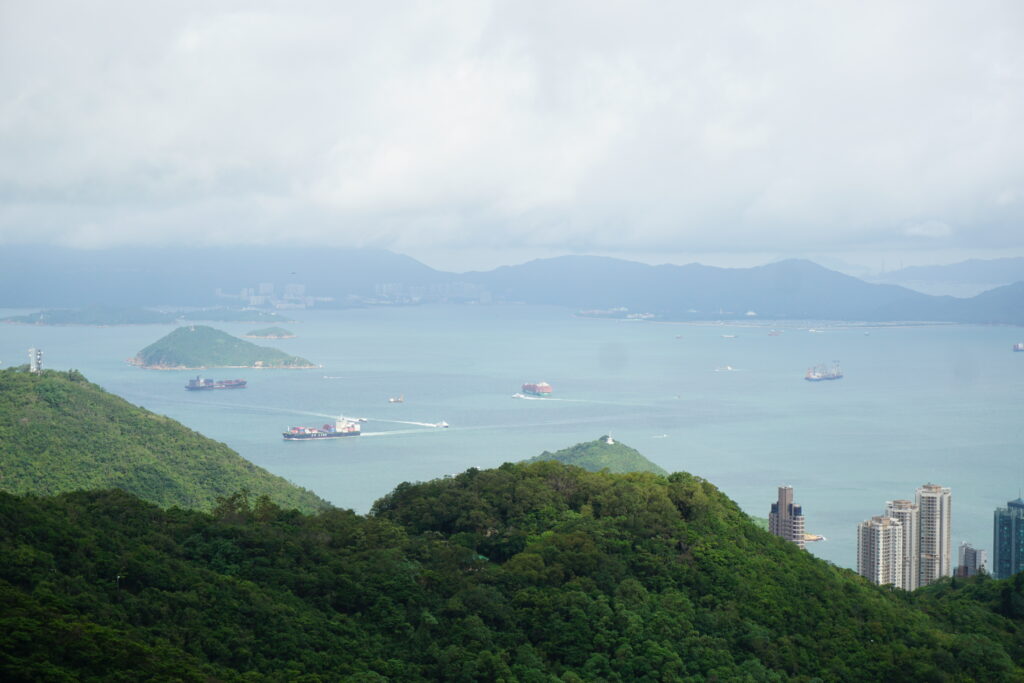
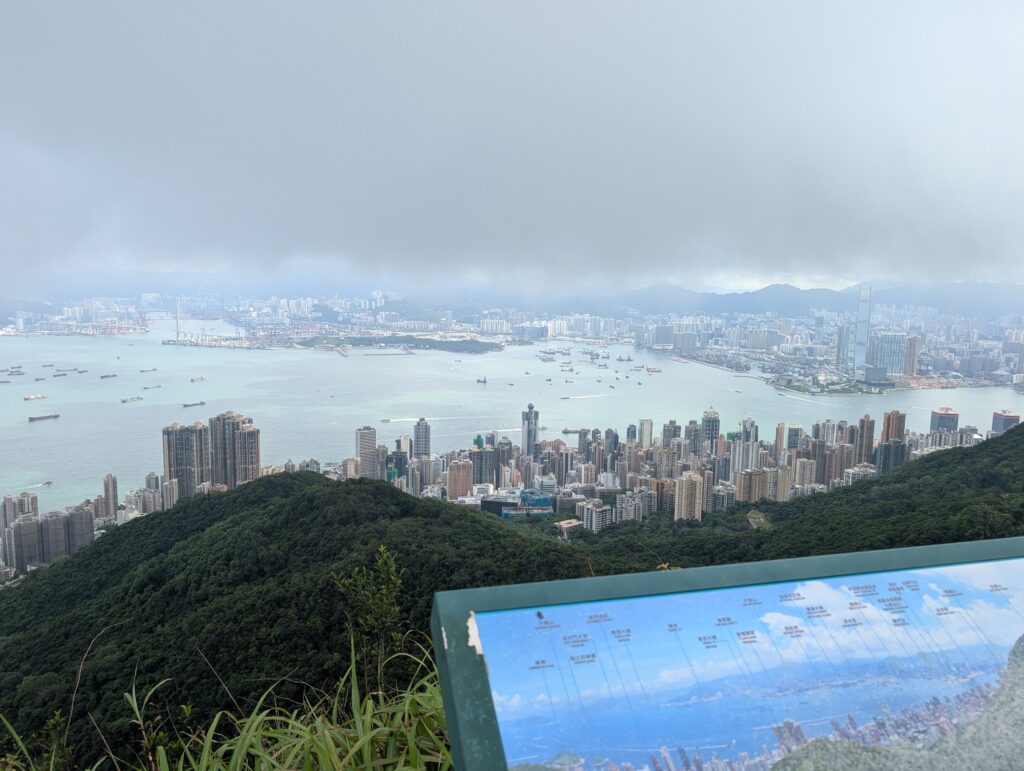
I grabbed some apples and a coke from a grocery store as midday neared and began the walk back down, again feeling too frugal to take the bus. The road spit out not all that far from Man-Mo temple, and that was on my list of things to see, so I made the stop. The temple sits right there among the high rises. It is a sort of communal temple, shared between gods of martial arts and literature, which give it its hyphenated name. It seems strange that a temple would be shared between gods of fighting and literature, but there it was. One room seemed to contain a mini mausoleum of human ash remains. Most visitors went only in to the main room.
Man-Mo temple did not have the same entry and exit protocols as the temples in Taiwan. It did also have the drum and the bell, but they were located on the same side, near the right entry. It appeared that tourists were observing the procedure and attempting to participate in the process. This did not seem disrespectful, as they were doing their best to follow the example of the temple’s local worshippers. I, on the other hand, chose to observe, not wanting to be disrespectful, and also not wanting to participate in anything like idol worship. I am not sure that performing a ritual for the experience, and not believing any of it is necessarily idol worship. Then again, many Roman Christians chose to be sent to their deaths rather than make a show of performing worship rituals to a god they didn’t believe in. In the end, it seemed best just to watch, and not play act someone else’s religion.
Walking back to my hostel would take me right past Maxim’s Palace. Hong Kong is famous for dim sum, a midday social meal composed of plates of appetizers you share with friends. It’s like a lunch time version of Spanish tapas. Dim sum are traditionally served in Hong Kong by older ladies pushing around carts laden with special wicker steam baskets to keep the dim sum warm. As they push the carts through the restaurant, they call out in Cantonese which dim sum they have. You flag them down if you want what they have, and they mark a card on your table indicating what you will be charged at the end. Very few dim sum restaurants serve this way anymore, but I wanted to go to one. I knew it would be hard for me to experience this on my own. Not only would it be difficult to know which dish was which, it would also be hard for me to eat very many plates of appetizers. It turned out that Maxim’s was enough of a tourist trap that some of the ladies could explain in a few broken English words the gist of which dim sum they were carrying. I tried three different ones, and they were pretty good. Maxim’s is fairly expensive, though. My meal cost close to $30. If you go there, though, you are paying for the atmosphere and the experience as much as the food. I was glad I went, even though I was so hot I had to nearly sponge bath myself in the bathroom, then wait for my shirt to dry a bit before I went in. I had worked up enough of an appetite and burned enough calories climbing the mountain that I didn’t feel bad eating three plates of appetizers.
I was close enough to my room that I didn’t think it worthwhile to ride a bus or MTR. I walked the remaining mile or so, then crashed out in the room to rest for a couple of hours. That evening, I recharged my octopus card and took the MTR back over to Kowloon to check out the night markets. I ate a lamb skewer and a plate of rice along with some shumai and spring rolls. I didn’t find anything I could not live without in the night markets. There were a lot of identical wallets, and quite a few similar chess and Mah Johngg sets.
One very friendly lady from Manchuria approached me, indicating that she was quite impressed by my height. She seemed to speak Mandarin rather than Cantonese. I used the translator to make small talk. She was not dressed up like a prostitute, and prostitution was not quite so prominent in Hong Kong as it is in other parts of East Asia. It turned out, though, that this was the real reason she was being friendly. It was a nice conversation, and she did not appear irritated when I made it clear I was not going to be a customer. I was a little sad, though, that my apparently friendly experience was really only a solicitation.
(Continued)
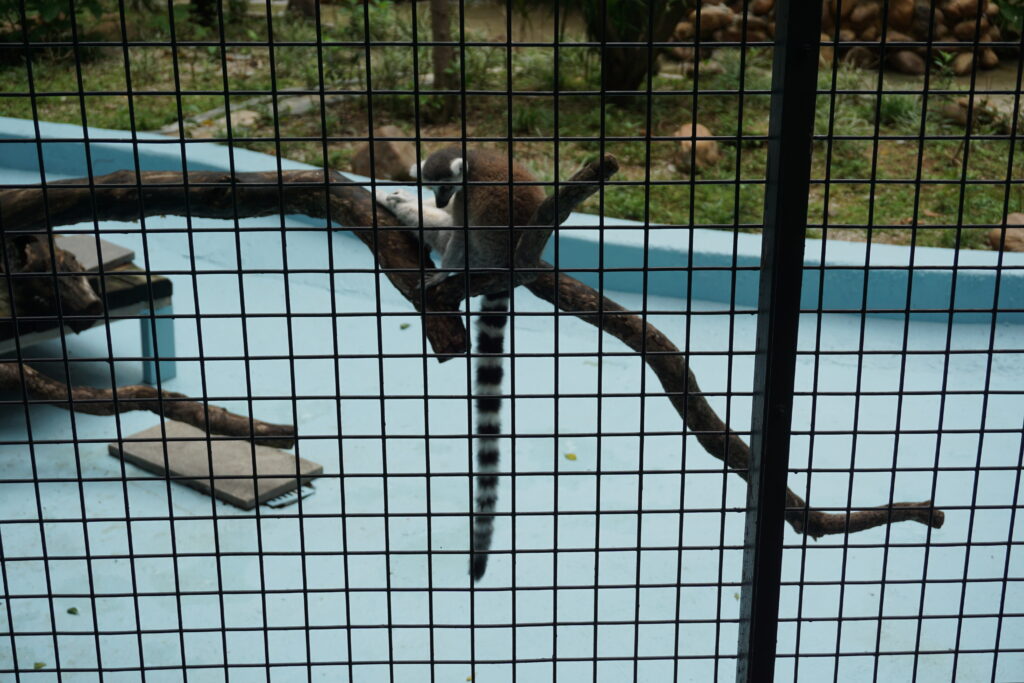
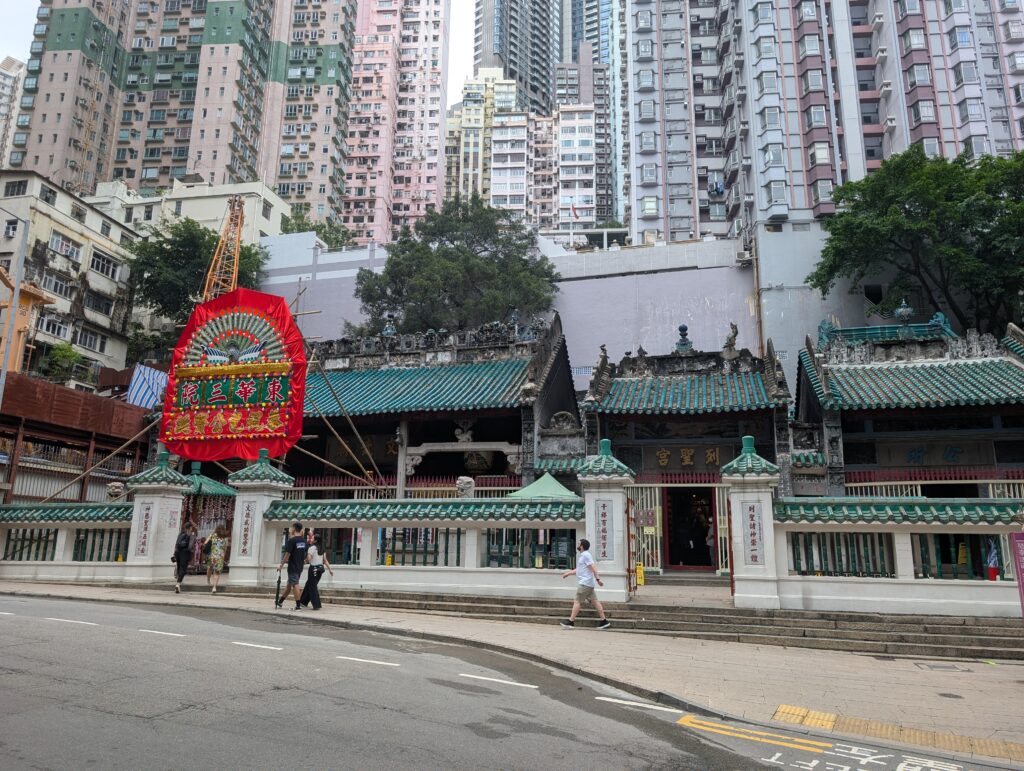
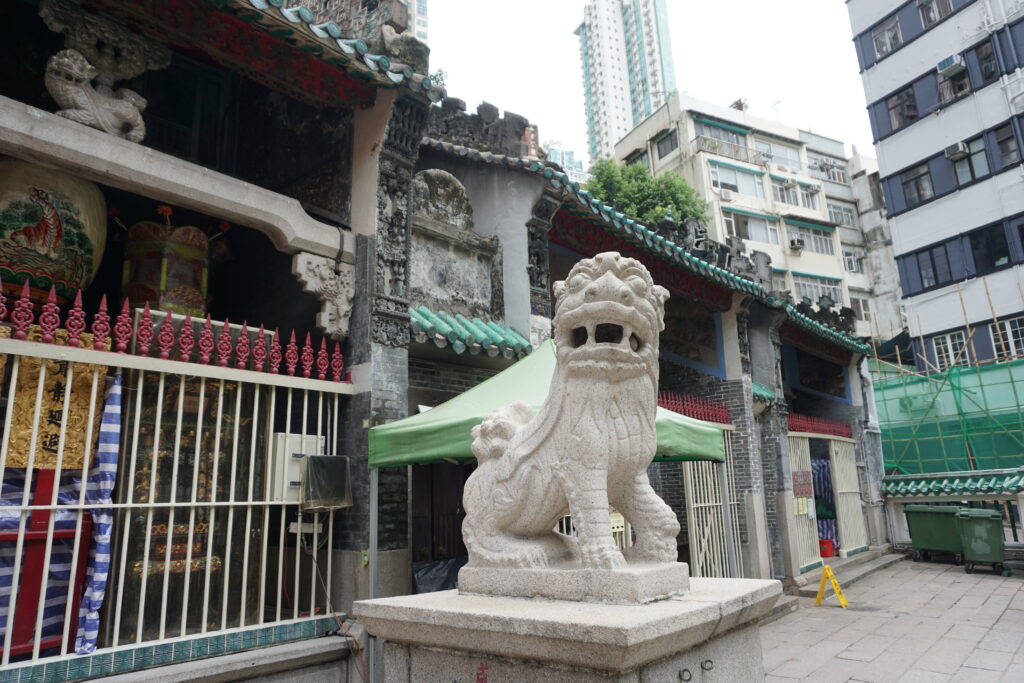
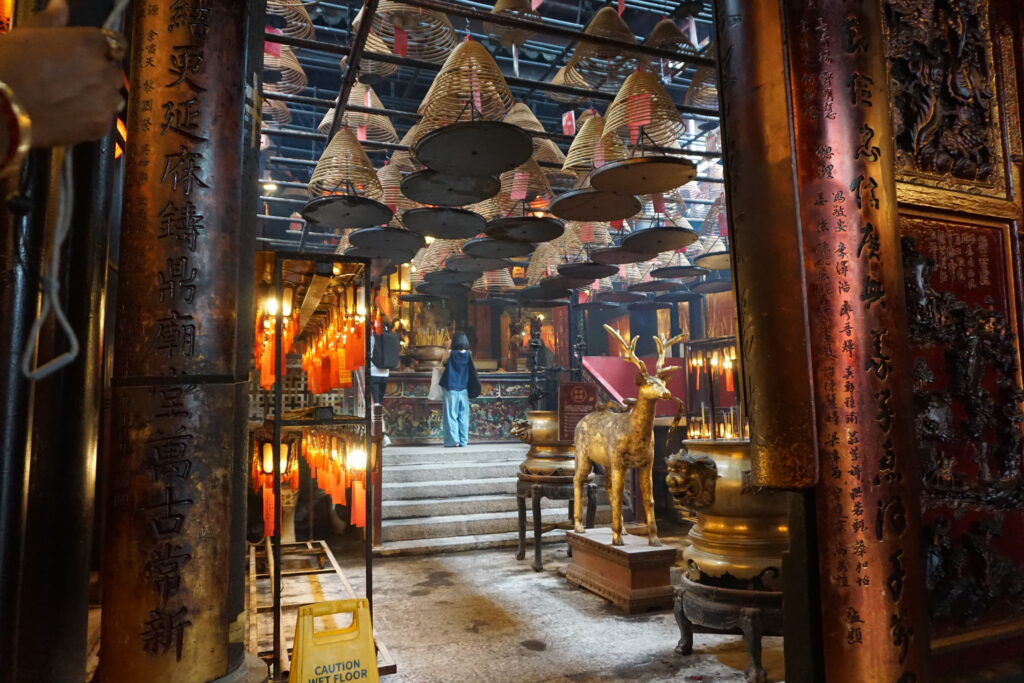
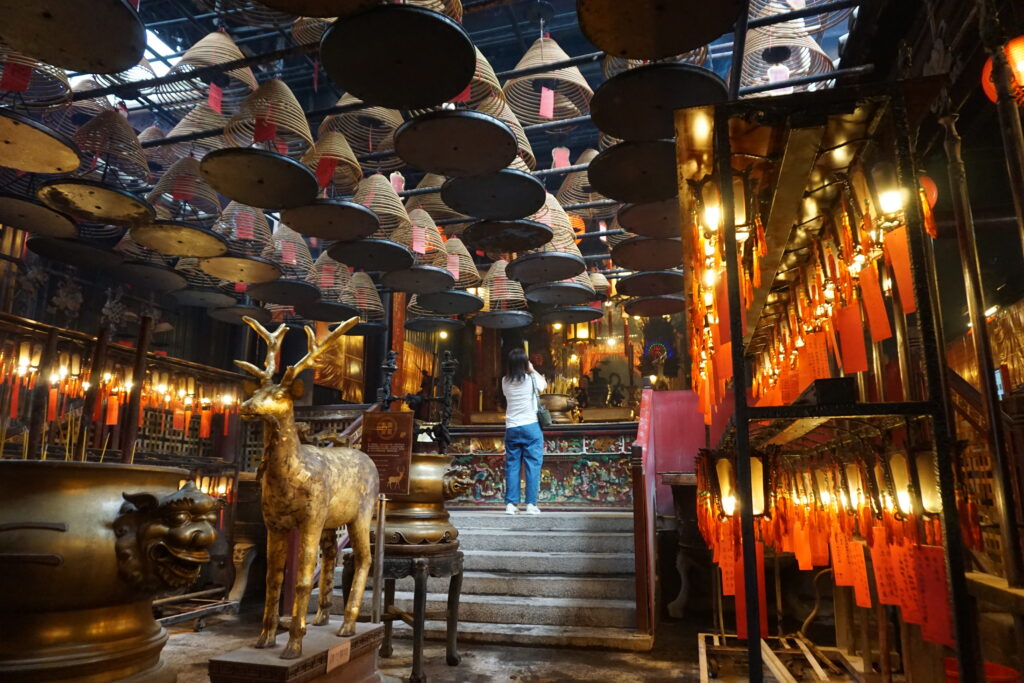
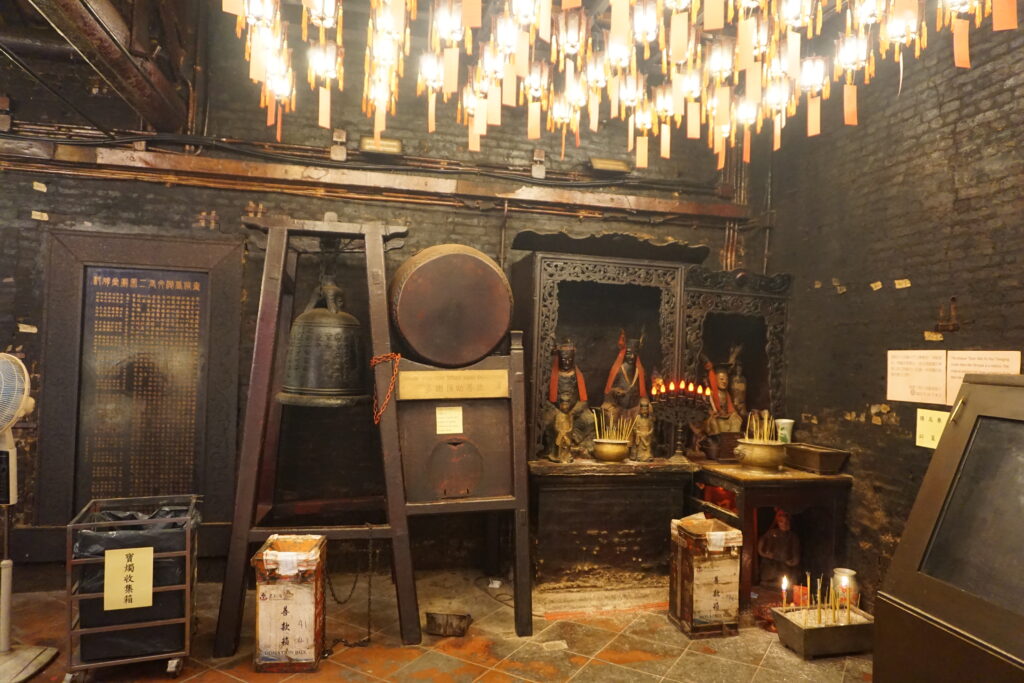
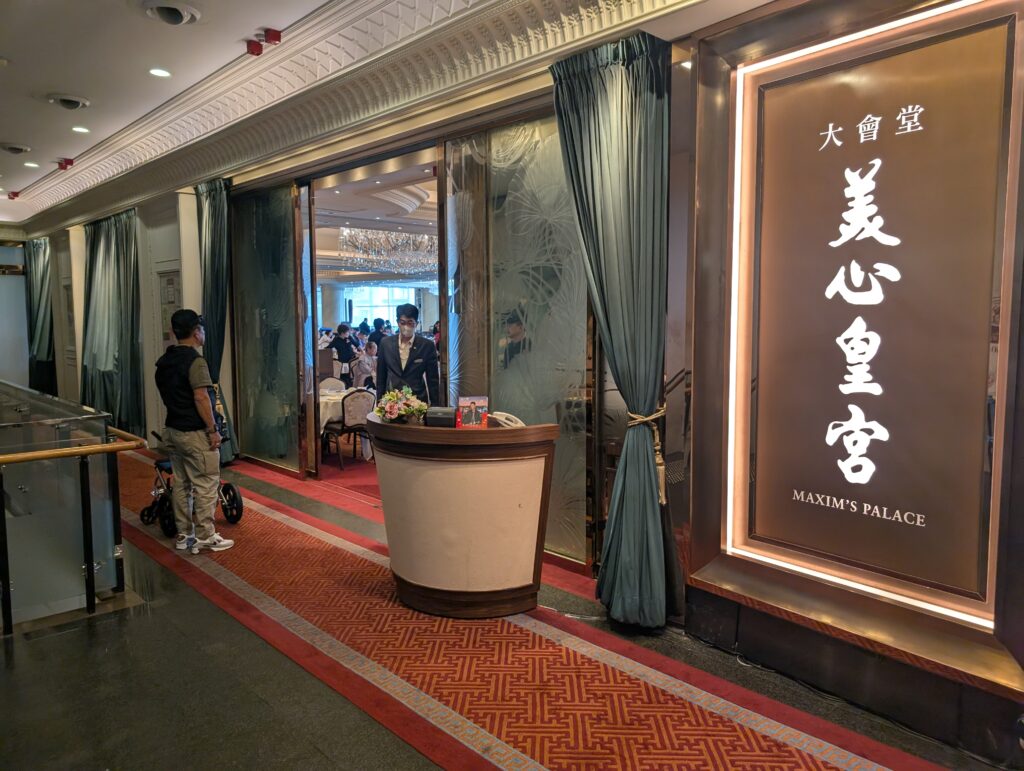
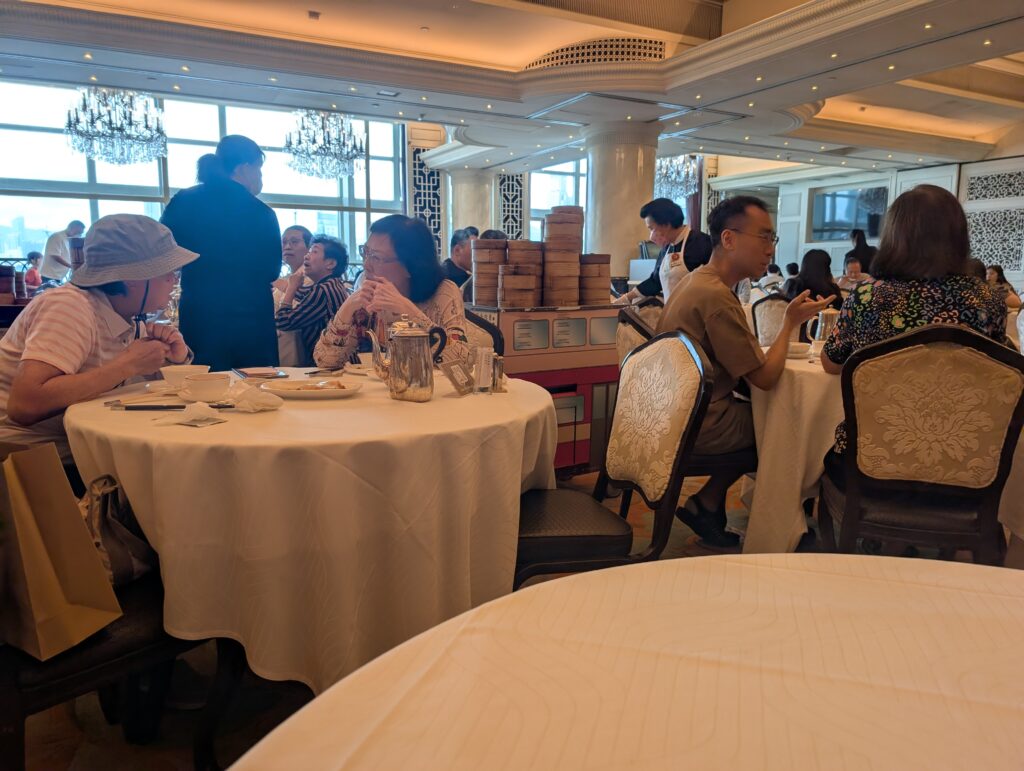
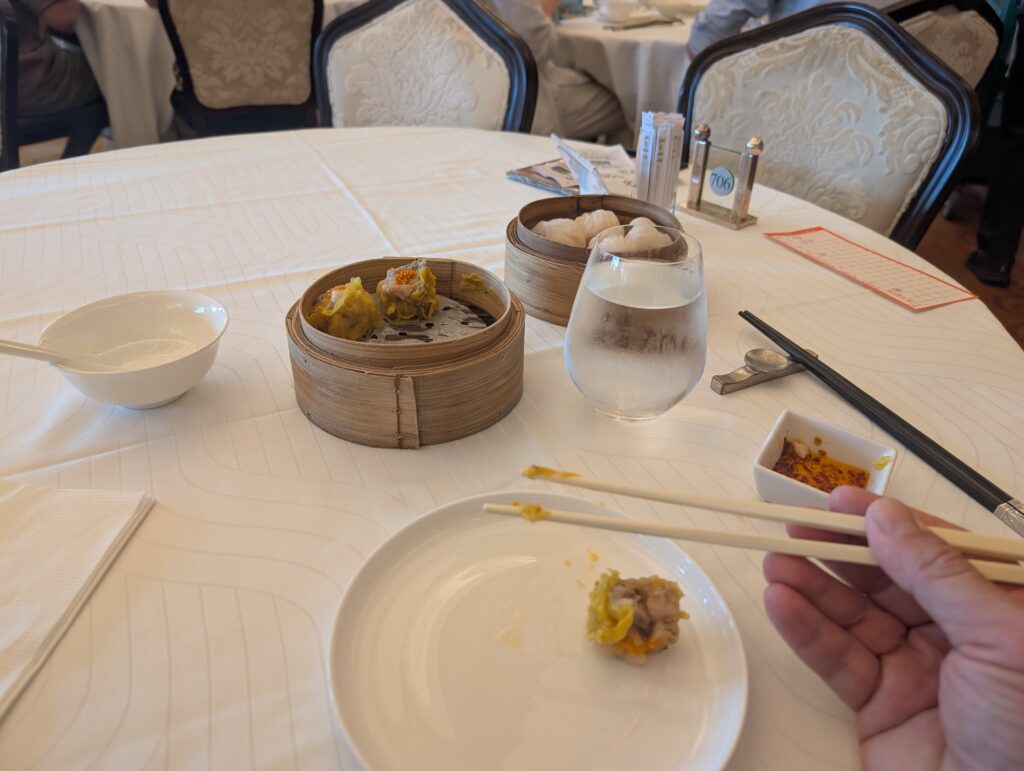
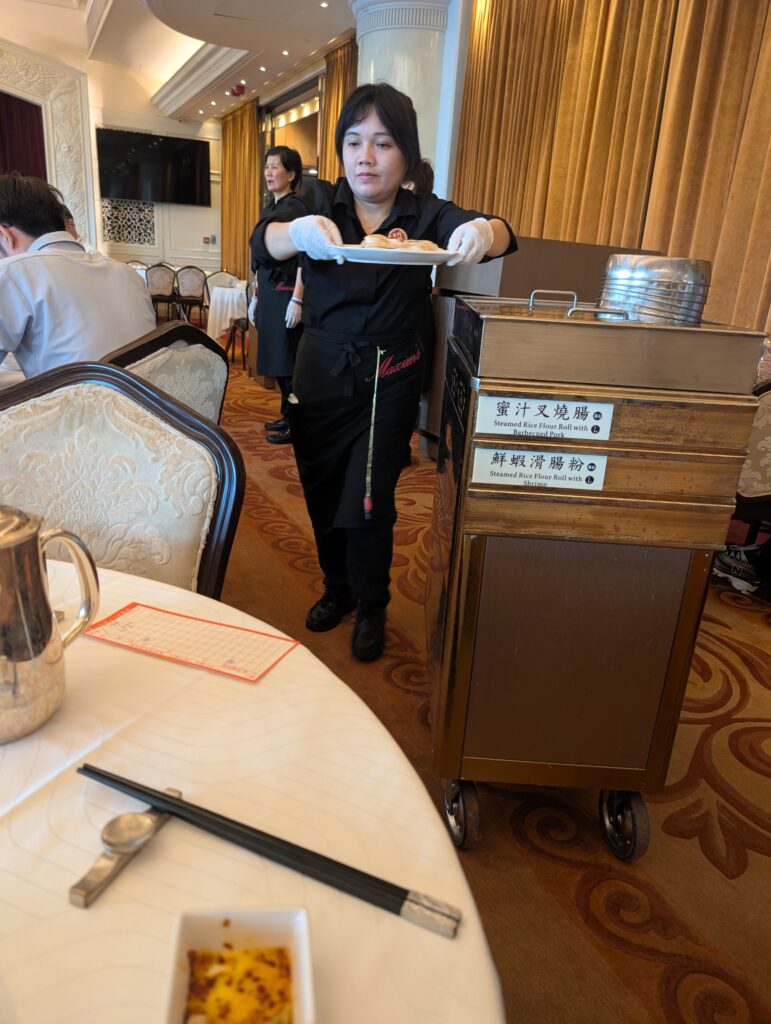
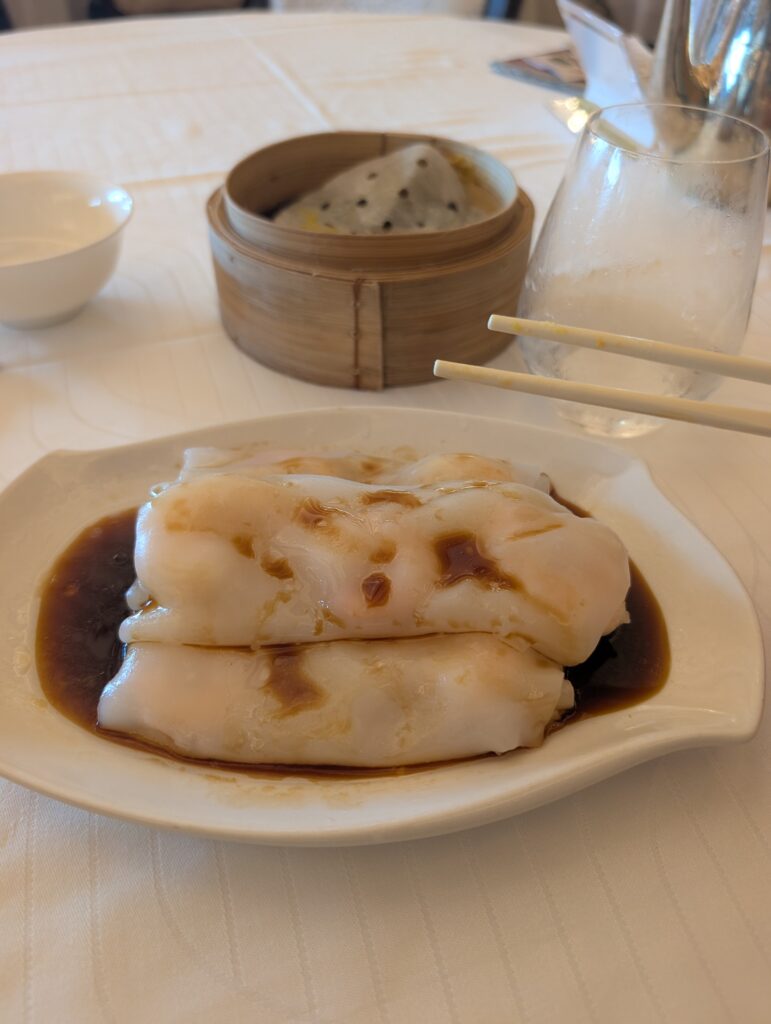
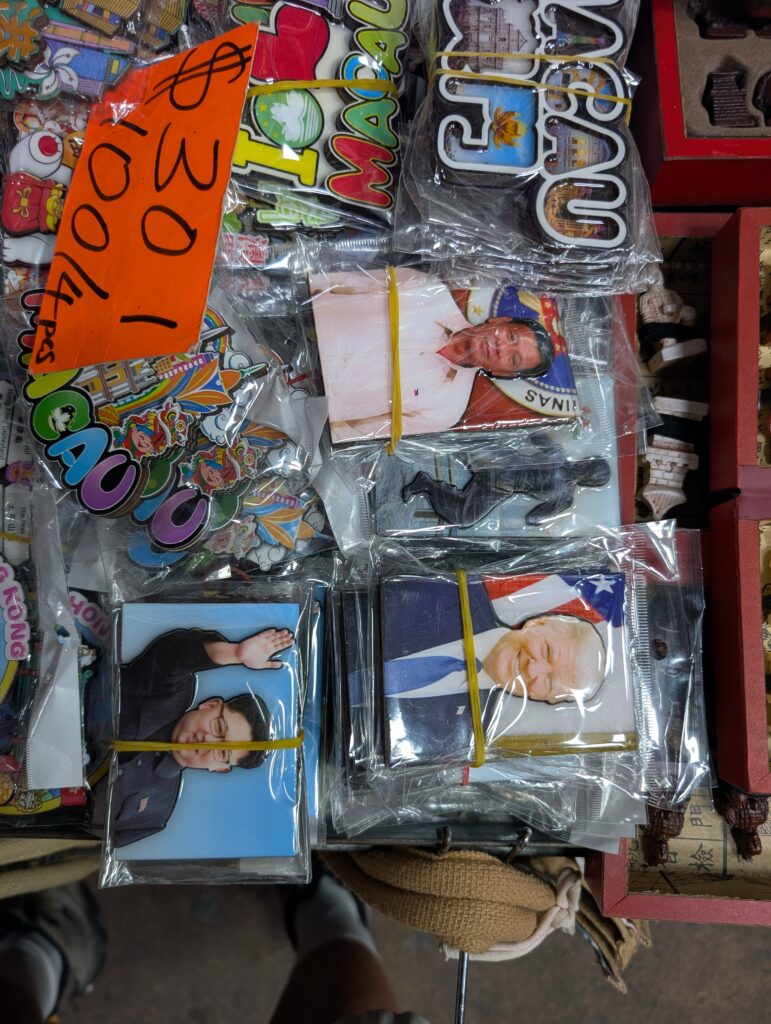
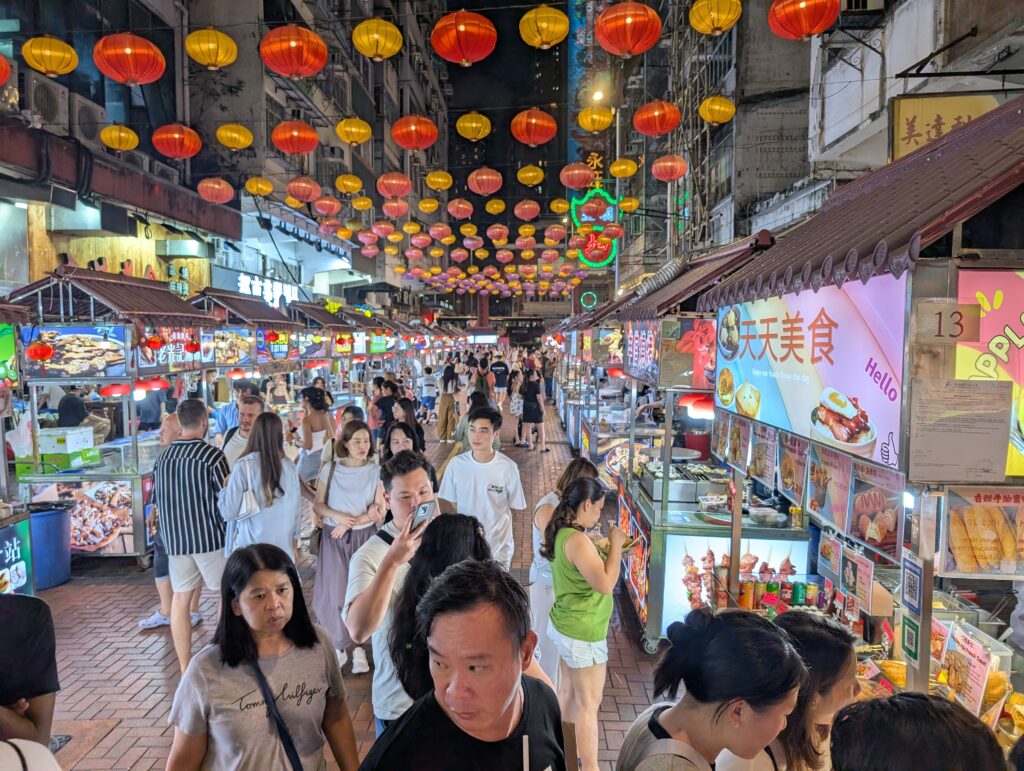
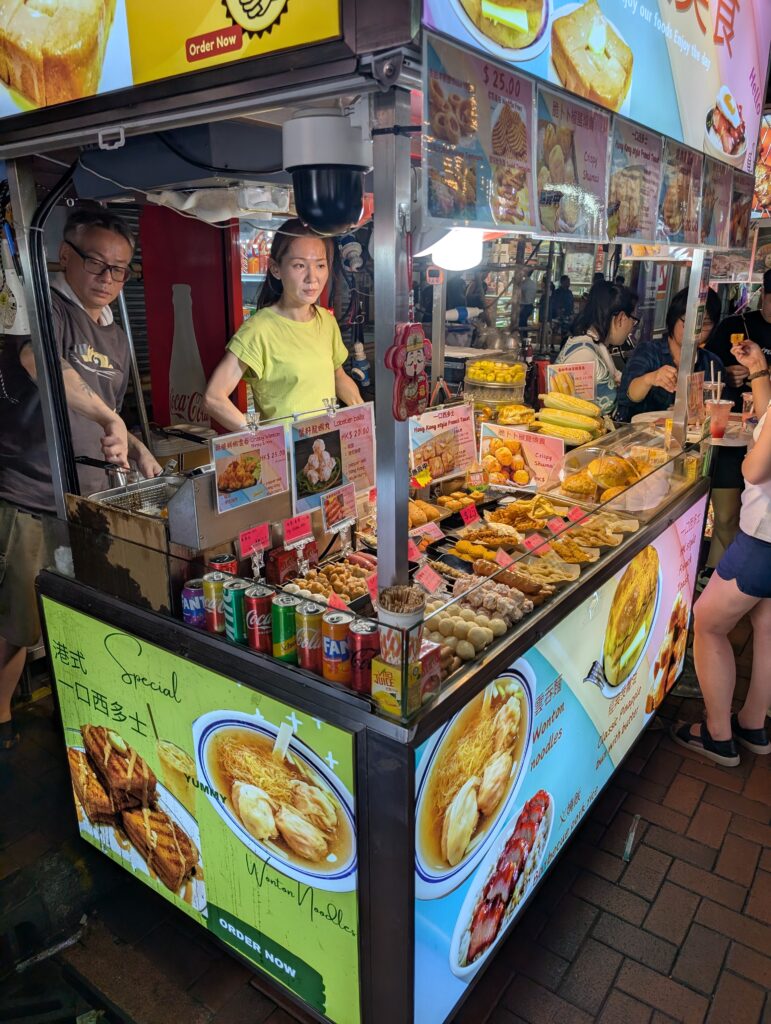
I worked on farm business and caught up on writing most of Wednesday morning. There was a lot to do. At about midday, I went back to Kowloon to see the famous markets. There are whole areas of town dedicated to selling one particular class of items. There is a flower market street, where nearly every store is selling something to do with flowers. There is also a fish street, a toy street, a bird street, a jade street, and who knows what all else. I walked down several of these. For some reason, they don’t want you taking pictures in may of these. I tried to capture most of my photos in establishments where they had not posted signs asking you not to take them. I took some others from across the street or some distance where photography could not really be prevented.
I ate lunch in the neighborhood, at a small sit-down restaurant. I was served black pepper pork chops with rice. I found it interesting in Hong Kong restaurants that although I was often not able to fully communicate with the staff, they assumed as a white foreigner I would not be able to eat with chop sticks. In Taiwan, I couldn’t really ask for a fork and spoon, and they weren’t readily available. So had gotten pretty proficient with the chop sticks. Now that I knew how to use them, the Hong Kong folks assumed I couldn’t and didn’t offer the sticks.
I thought it would be fun to ride a junk around the bay. I at least wanted to see one. There are two companies offering rides. One, the Aqua Luna, runs a fancier, more comfortable ship with better refreshments, but their ship is really a metal prowed vessel with a couple of scalloped sails attached to make it look like a junk. Duk Ling is actually a 65 year old wooden fishing vessel that can run under sail power. It is sometimes crowded and they just offer you a water bottle or a canned beer, but it costs less and it’s really the kind of ship it claims to be. I made my way over to the Kowloon waterfront to catch the 4:30 sail on Duk Ling.
The walk over was nice. I stopped at the Hong Kong Space Museum. I strolled the Star Walk, where you gaze across the bay looking at the magnificent Hong Kong skyline, backed by the peaks I had climbed the day before. It was a beautiful sight. The city view is actually better from Kowloon than from Hong Kong Island, because it’s the Hong Kong Skyline you want to see. Crowds of other tourists paused for selfies in front of the iconic views of this international city. The weather was similar to the previous days, but a breeze from the water made it bearable. I took lots of pictures myself, both before and after I got on the boat. I chatted with a family on board from Australia. They were on a stopover en route to London for a European vacation. Just as we were about to arrive back at the dock, a rainstorm came up, driving us under the sheltered area. I had seen what I came to see, and didn’t feel bad about the rain. The crew offered thin plastic ponchos, but I had my umbrella.
Back in my neighborhood I strolled over to the bazaar for a bite. I had a nice meal of Taiwanese sausage over rice and vegetables. The cost was just under American pricing – about $8 for my meal. I walked around the high rises in the rain for a while, before heading back to the room to turn in. I was sleepy, and could not stay up to write about what I had done. For the first night on the trip, I slept 7 ½ hours, and was rested and ready to head to Macau on Friday. Click the tile below when you want to read about Macau.
(Continued)
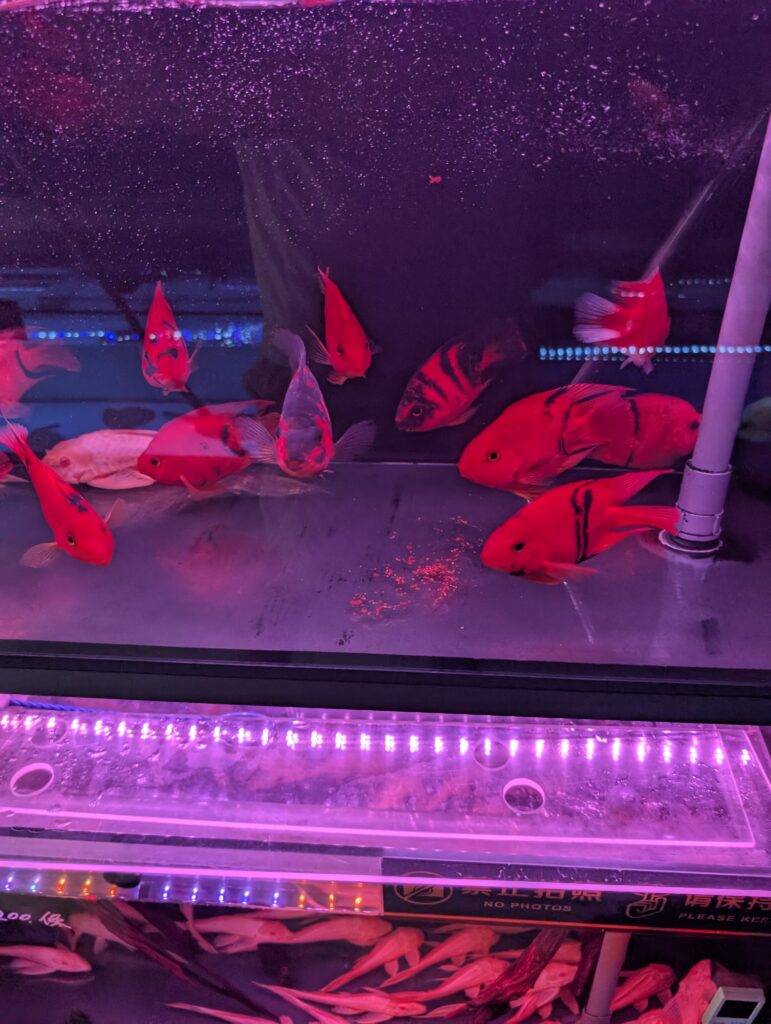
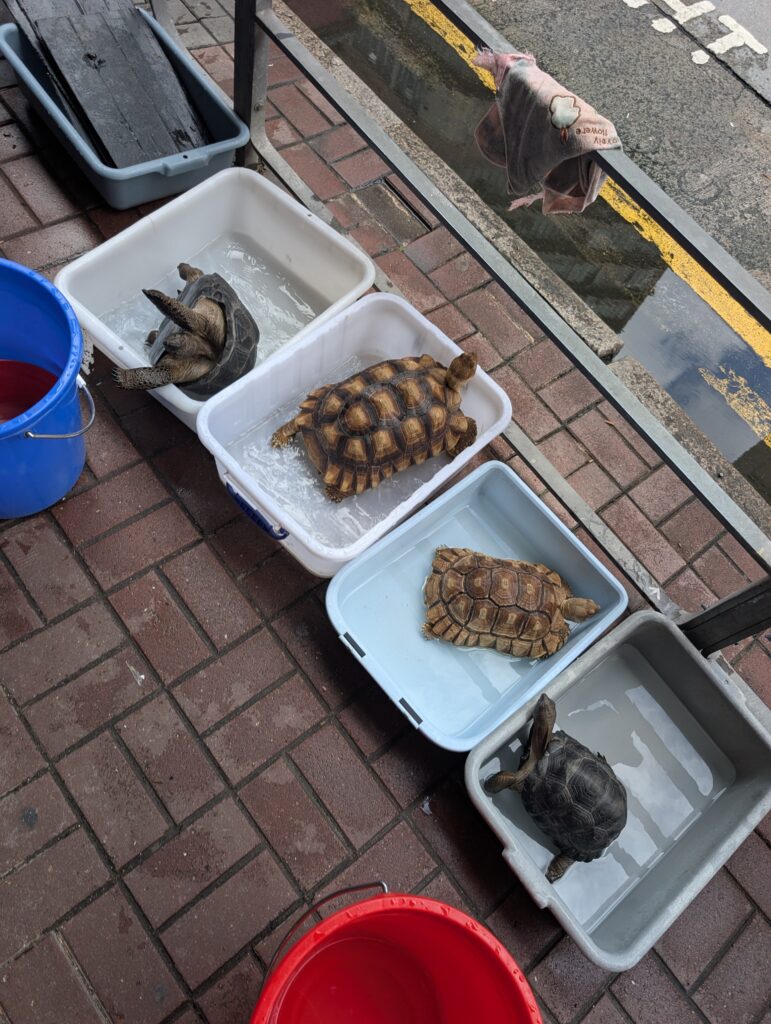
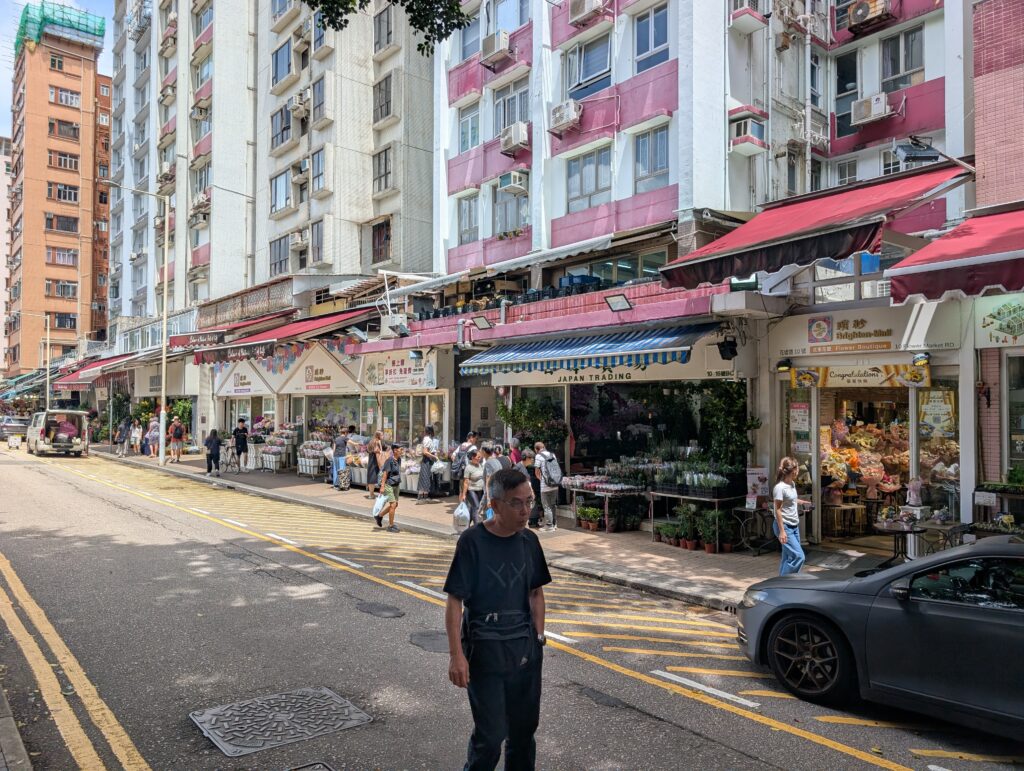
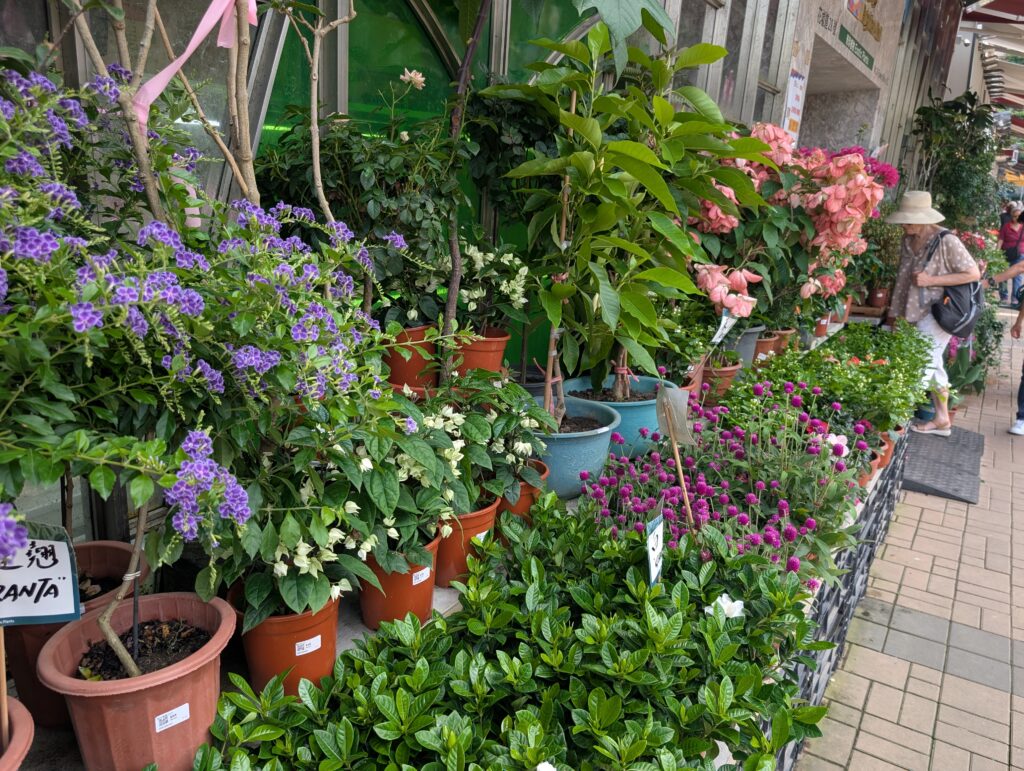
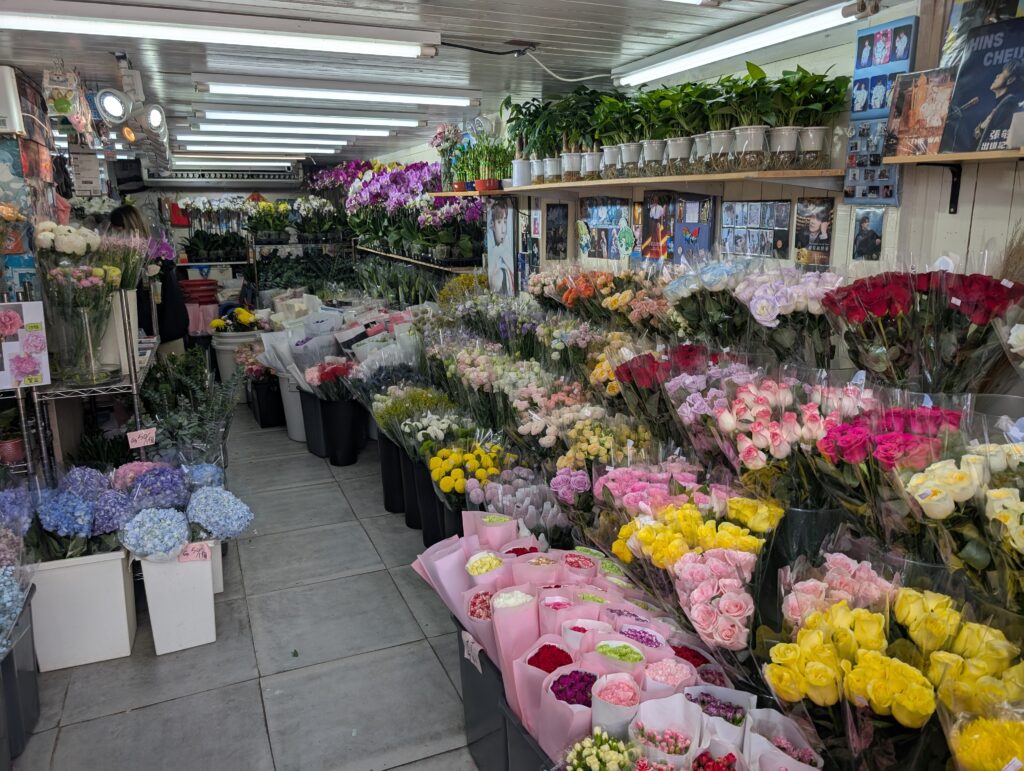
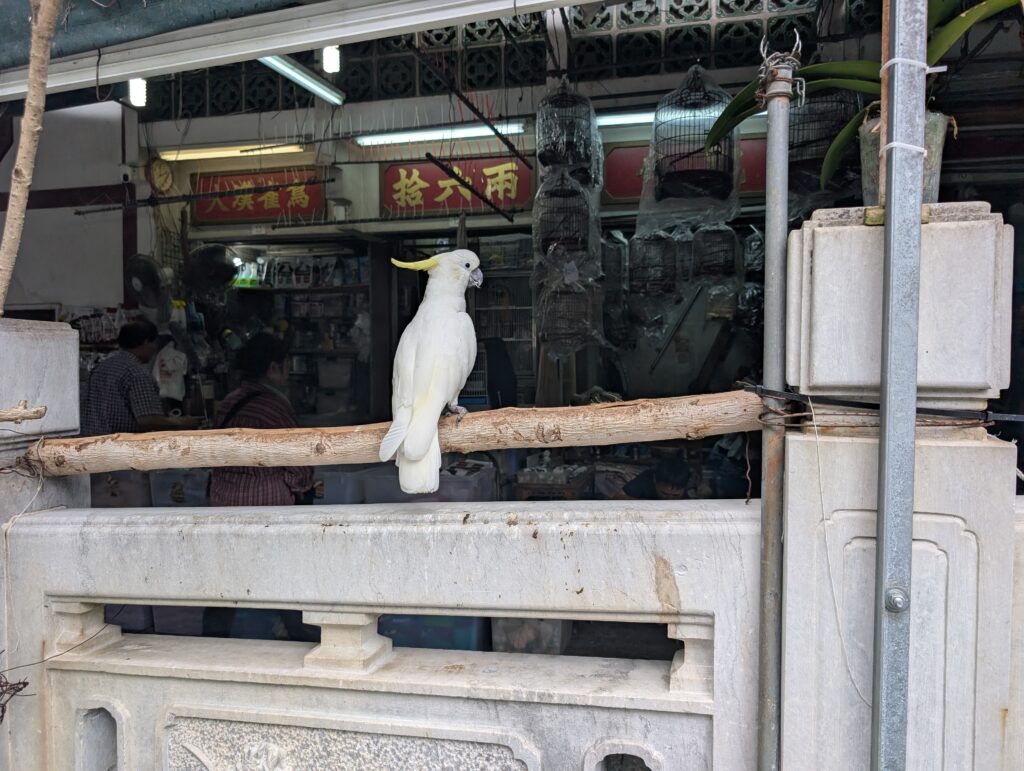
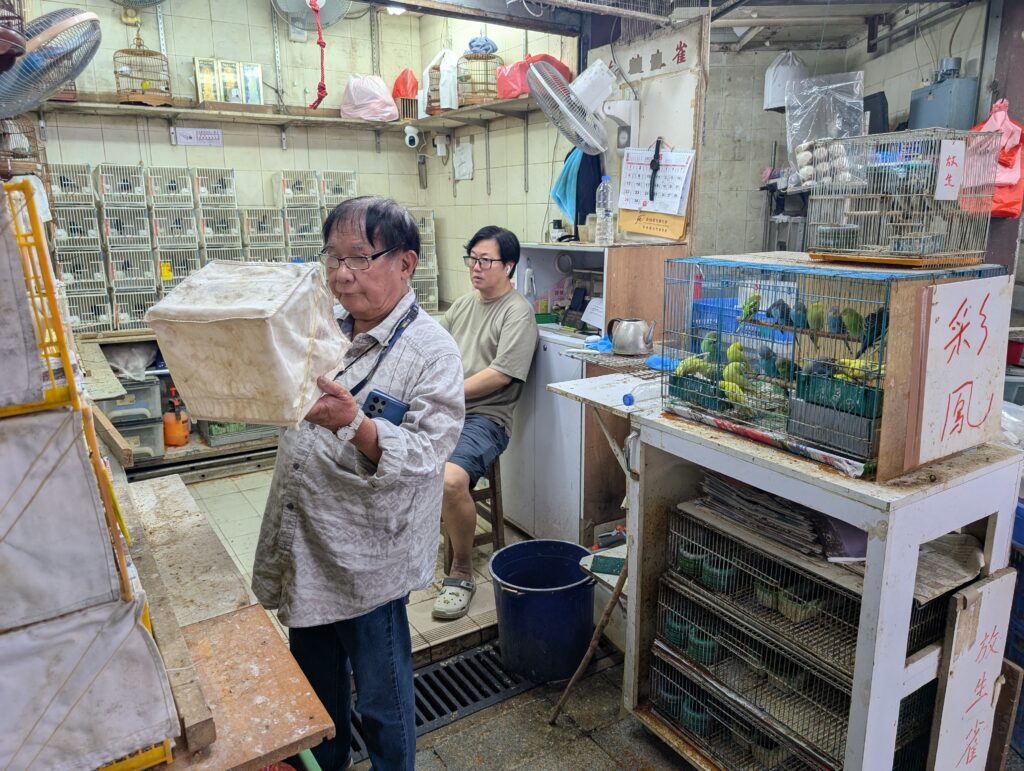
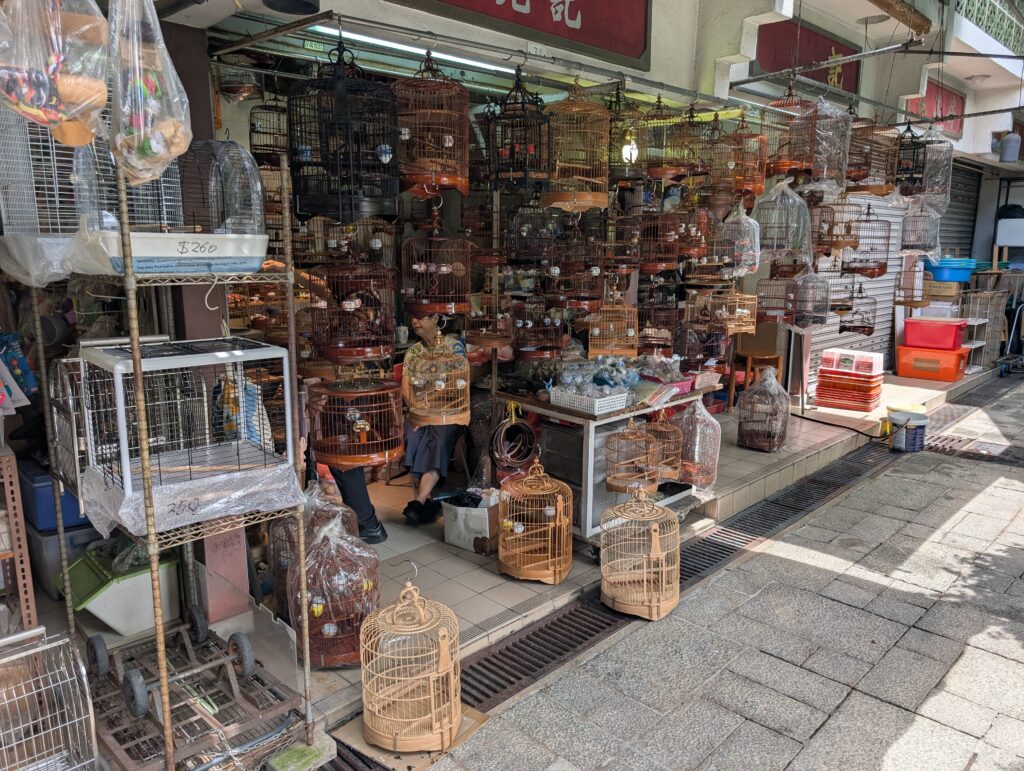
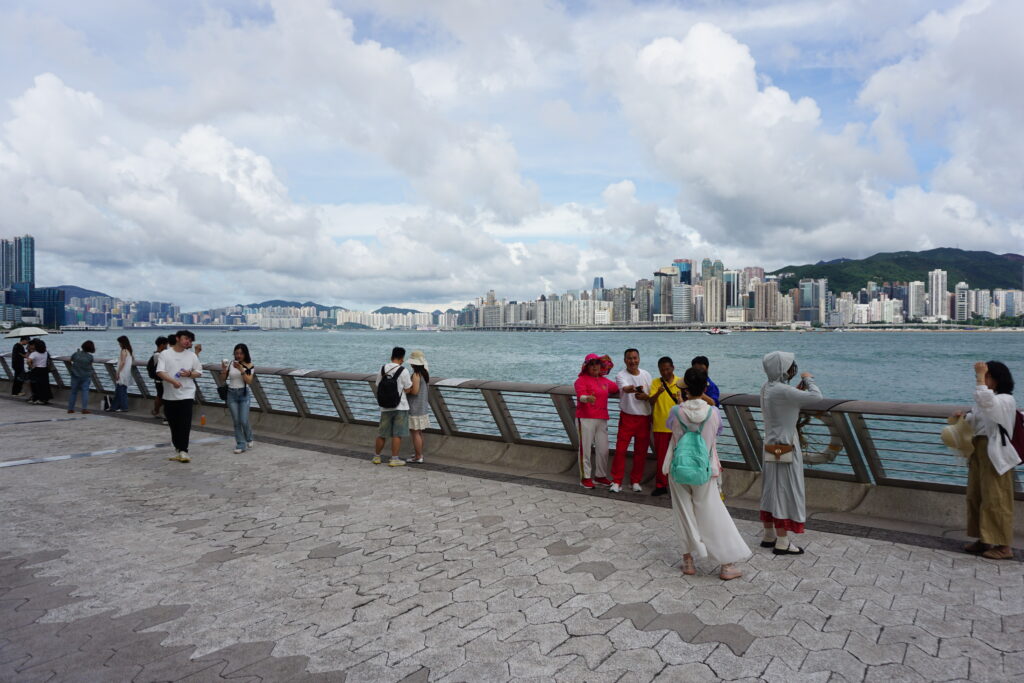
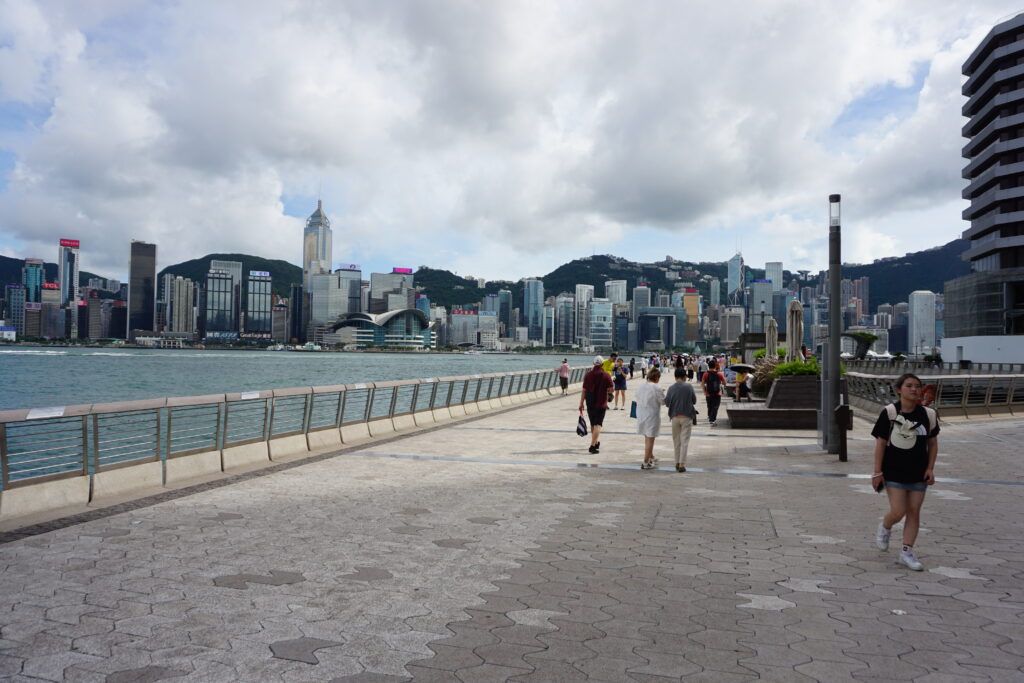
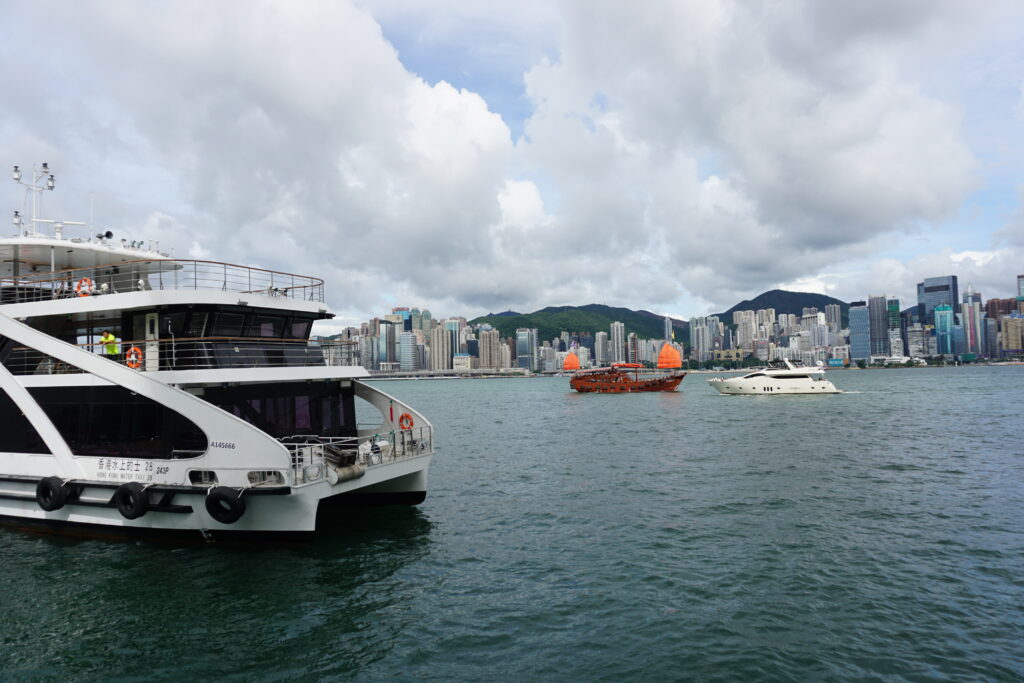
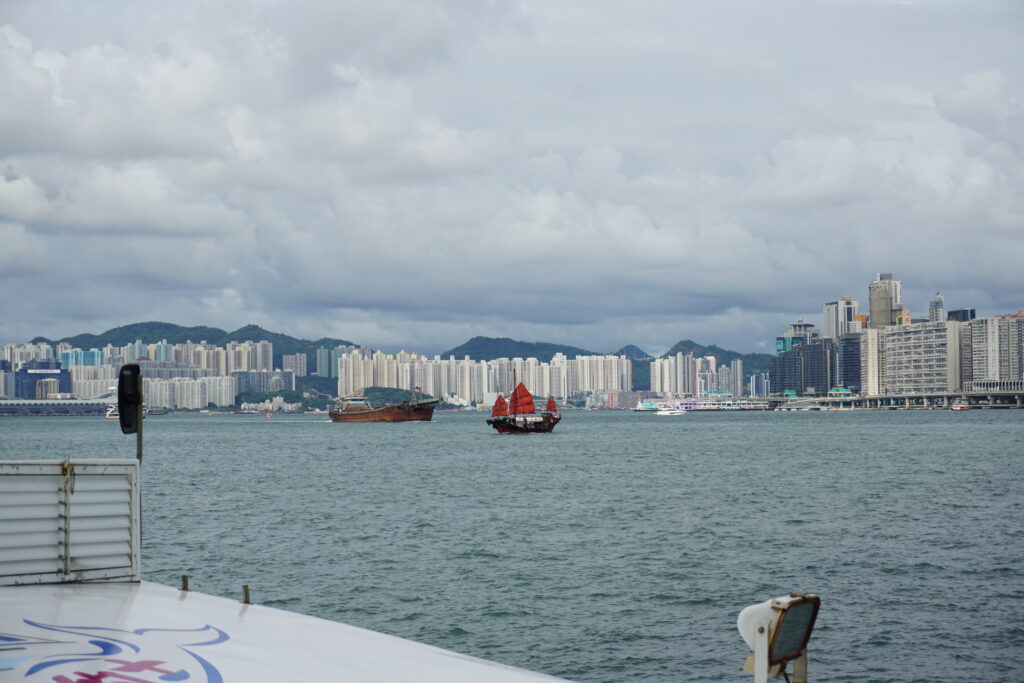
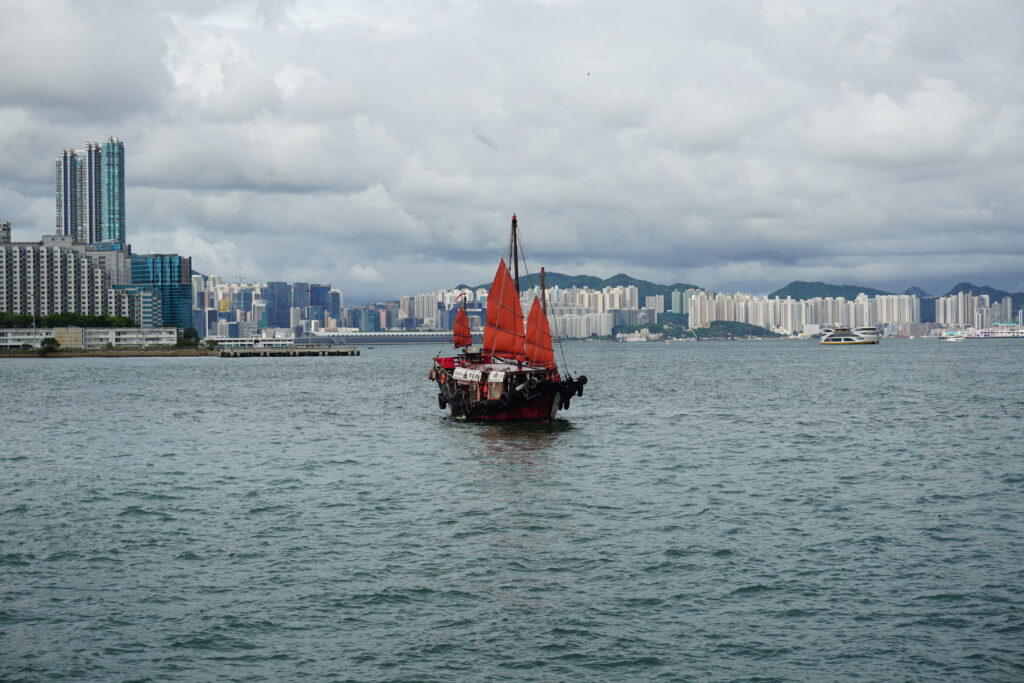
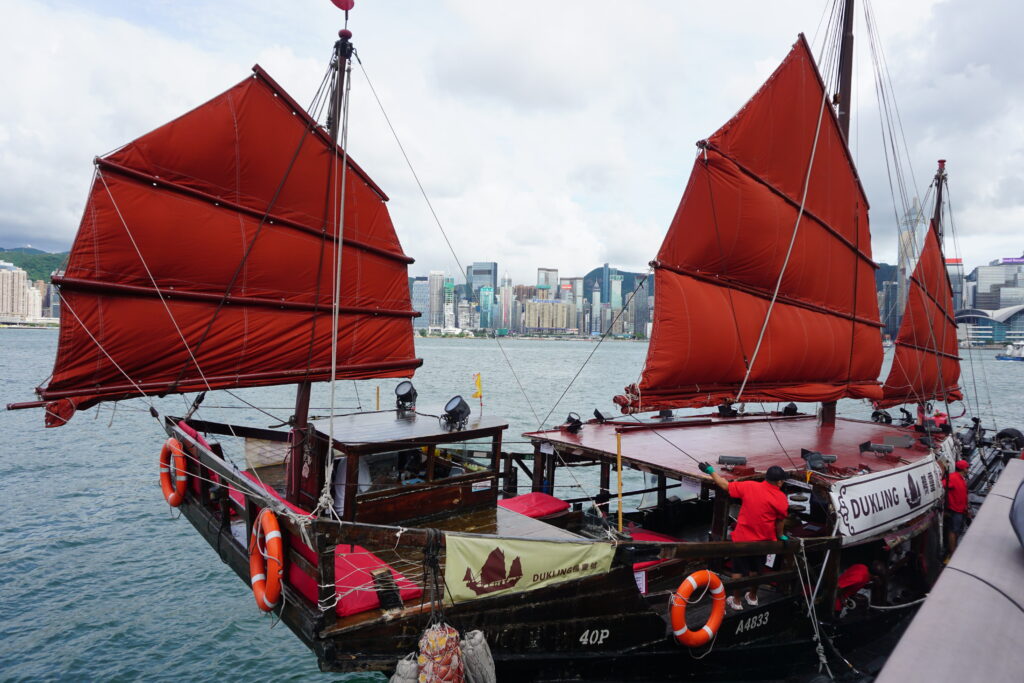
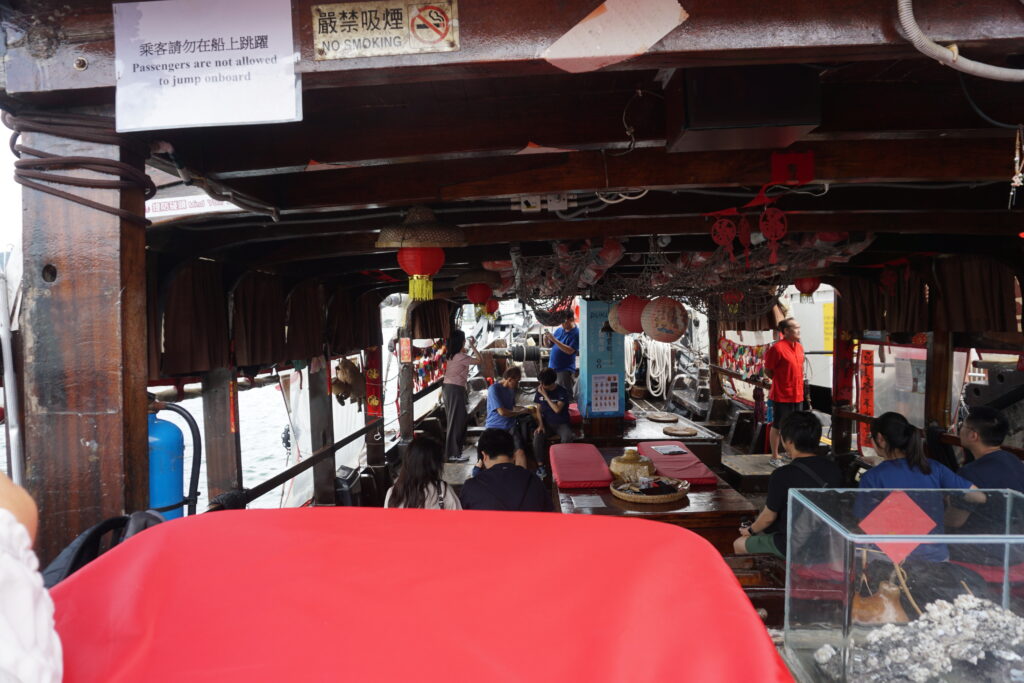
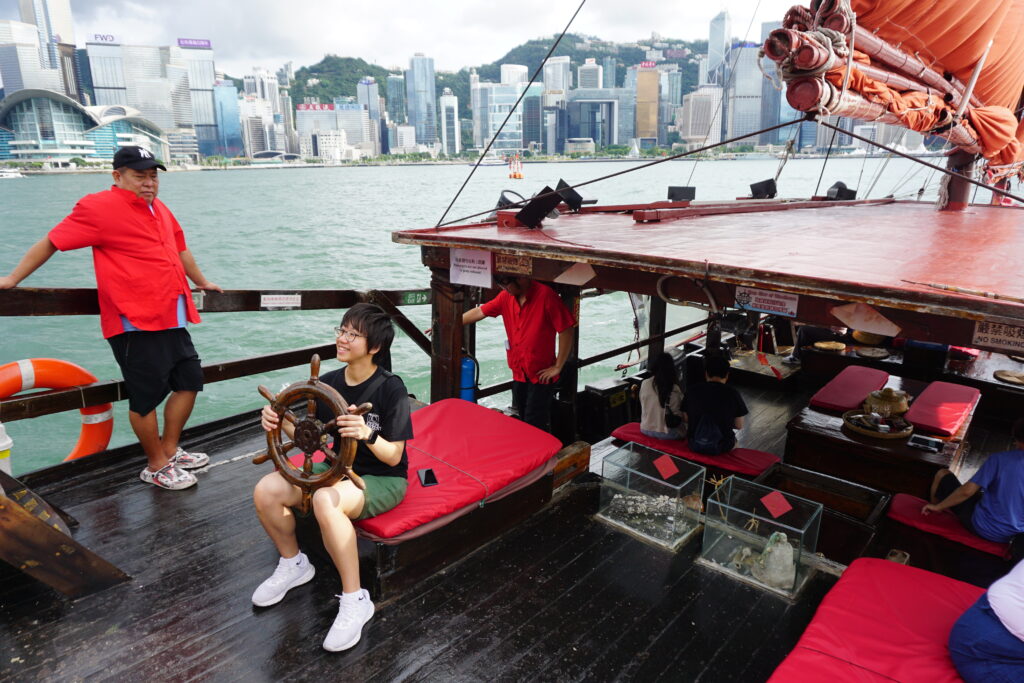
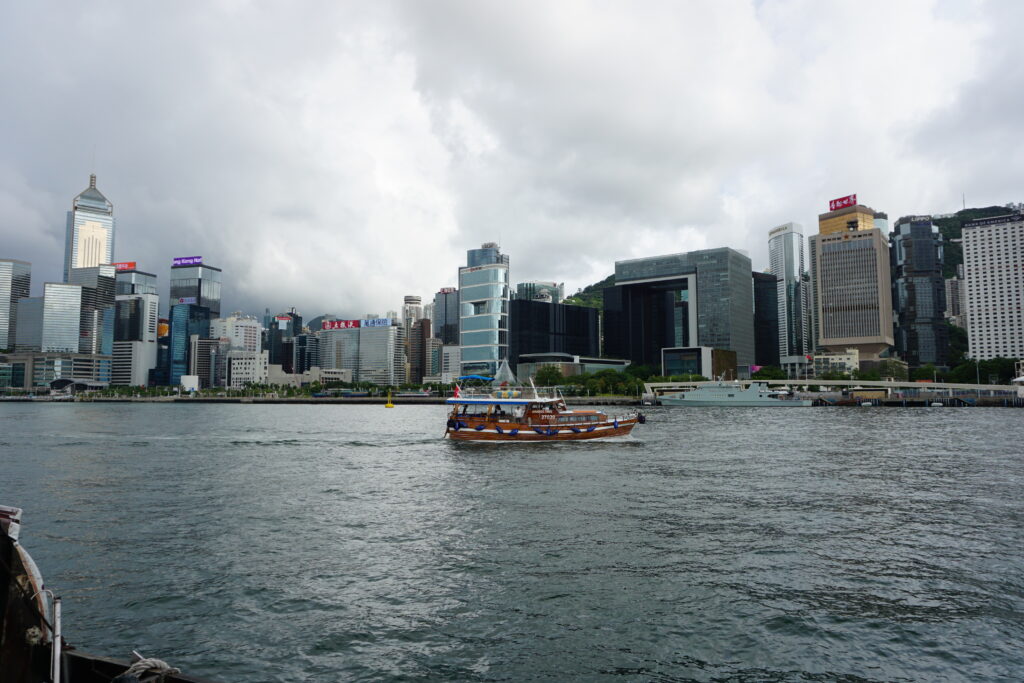
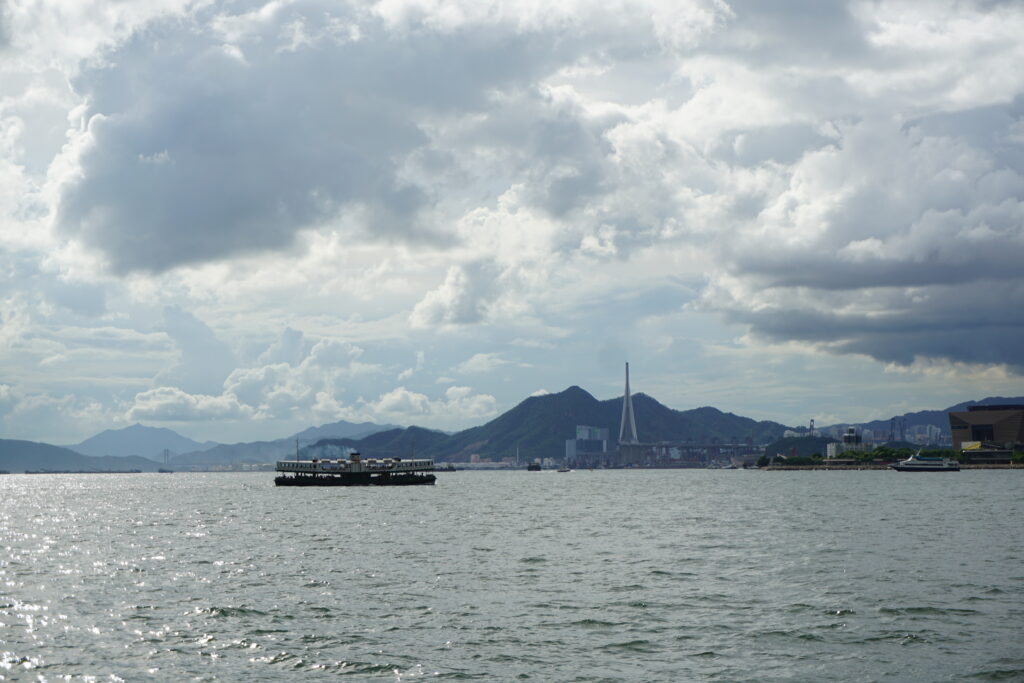
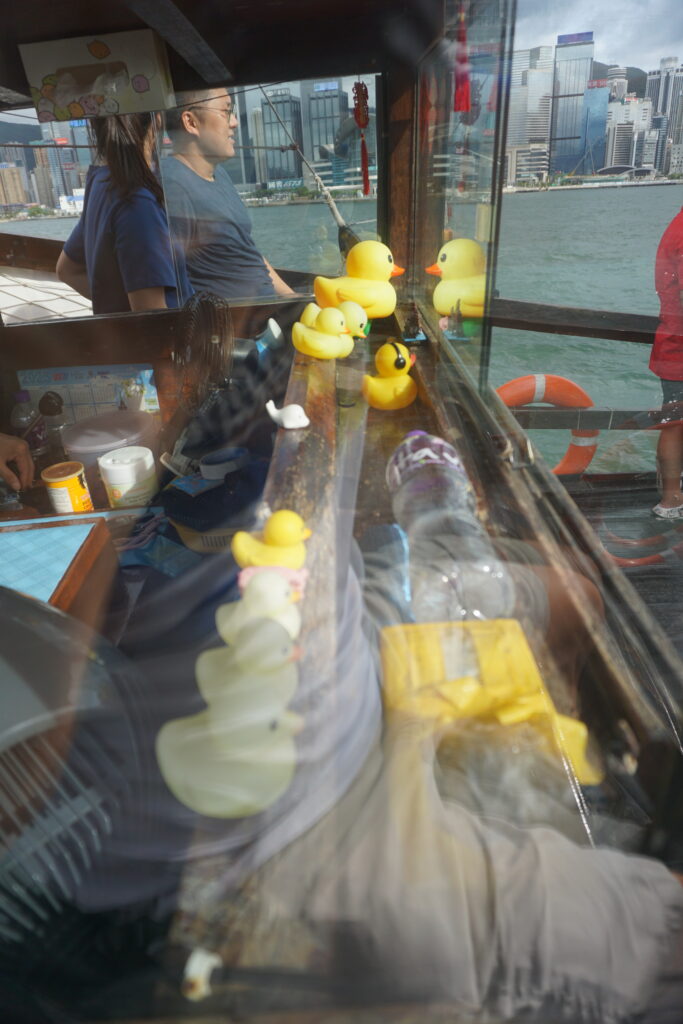

I got home fairly late from Macau, and grabbed some groceries. After doing some business in the morning, I thought I would use Saturday to clean up the remaining sights I might want to see around Hong Kong. Hong Kong has a well developed metro system (MTR), but the city is spread out wider than you might expect over several islands and a nub of the mainland. I decided to go see the “giant Buddha,” aka Tian Tan Buddha. This is on a peak on Launtau Island. It took close to two hours to get over to it via buses. The more popular alternative is to ride a gondola up, but that costs about $25, and the main attraction is to see the views. I had been atop Victoria Peak already, and figured the views would be just as good from the Buddha statue on the peak. I was correct. The gondola wouldn’t have saved any time either.
The Tian Tan Buddha is a relatively modern construction. There is a large monastery nearby that many people visit for the meal you can buy in conjunction with your ticket to see the Buddha. Visiting the Buddha was otherwise free, though, and I wanted to see if I could find some seafood in Tai O village, which is also on Lantau Island. I bypassed the monastery meal. My only cost to visit the Tian Tan Buddha was the bus fare to get to it. There are nice views from the top. I have seen other Buddha statues, though, many with much longer histories than this one. It is fine, but I did not consider it one of the highlights of the trip.
I rode the bus back down the mountain to the fishing village of Tai O on the far side of the island. It is a touristified collection of houses and older shops on piers. There are a couple of outfits there offering dolphin watching tours. I thought it very unlikely I would see a dolphin there, and opted not to take the ride. I grabbed lunch in a cafe there before taking a ferry back to the city. My meal was OK, and I learned a lesson about restaurants in Hong Kong. They all provide tea, which they charge you for. I don’t really like tea. At previous restaurants, I had always specifically said I did not want the tea. In this case, when I ordered, the waitress asked if I wanted anything else. I said just water. Apparently there was tea on the table anyhow and I was charged for it even though I did not drink it and was not aware it was there, and even said I only wanted water. Apparently, tea is assumed, and it is assumed you know you’ll be charged for it. Either that, or they swindled me for $5HK. I assume the former. Five Hong Kong dollars equal about seventy cents, U.S., so I won’t have to file for bankruptcy.
I made my way back to Kowloon to see the Walled City Park. The walled area had been established as a fort on the land based side of Hong Kong at least as early as the Song Dynasty (about 1,000 years ago). It was used on and off as a military post. Once Britain took control of Hong Kong Island in the mid 19th century, the Qing Dynasty manned the fort as a check on British presence and advancement. Once the British leased the rest of what is now Hong Kong in 1898, the area was no longer used as a military post, but was a stronghold of sorts nonetheless.
The population began to grow after World War II as refugees from the Chinese Civil War poured out of the mainland. The Walled City became known as an enclave of illicit activity and densely populated tenements. By the 1980s, the population had reached over 35,000, which doesn’t sound all that impressive until you realize that the area is less than six and a half acres! That has to have been the highest population density anywhere on Earth at the time. The area was known for Tong gang activity, and the sale of anything from dog meat to narcotics, including sex, gambling and other vices.
The British finally decided to knock the place down in the mid 1990s, leaving only the yamen (office), and some of the remaining foundations of the South gate. It is a very nice park now, but sadly other than the to structural remains I just mentioned, the only evidence you can really observe there are photos of what the place used to look like.
It rained on and off throughout the day, as it does most summer afternoons in Hong Kong. One of the many times I opened and closed my lightweight miniature travel umbrella, I broke one of the supports. I walked through the markets in Kowloon on the way back to my room, thinking I would come across one. I had seen several when I walked through on a different day. Somehow I never ran across one. I should have searched on a day when it was raining. All of the shops sell ponchos and umbrellas then.
(Continued)
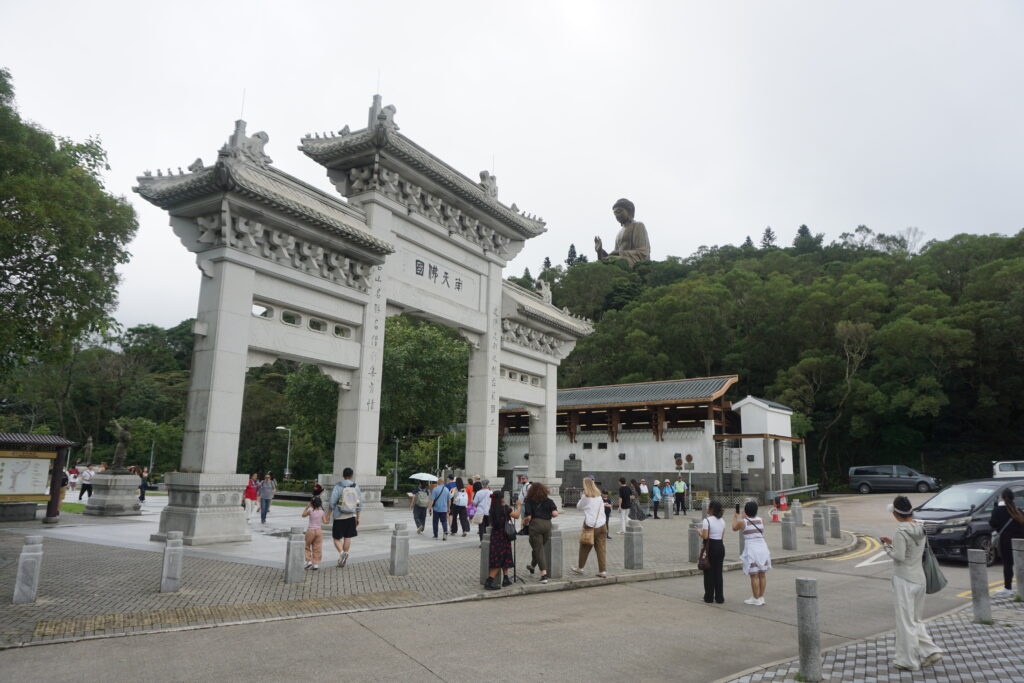
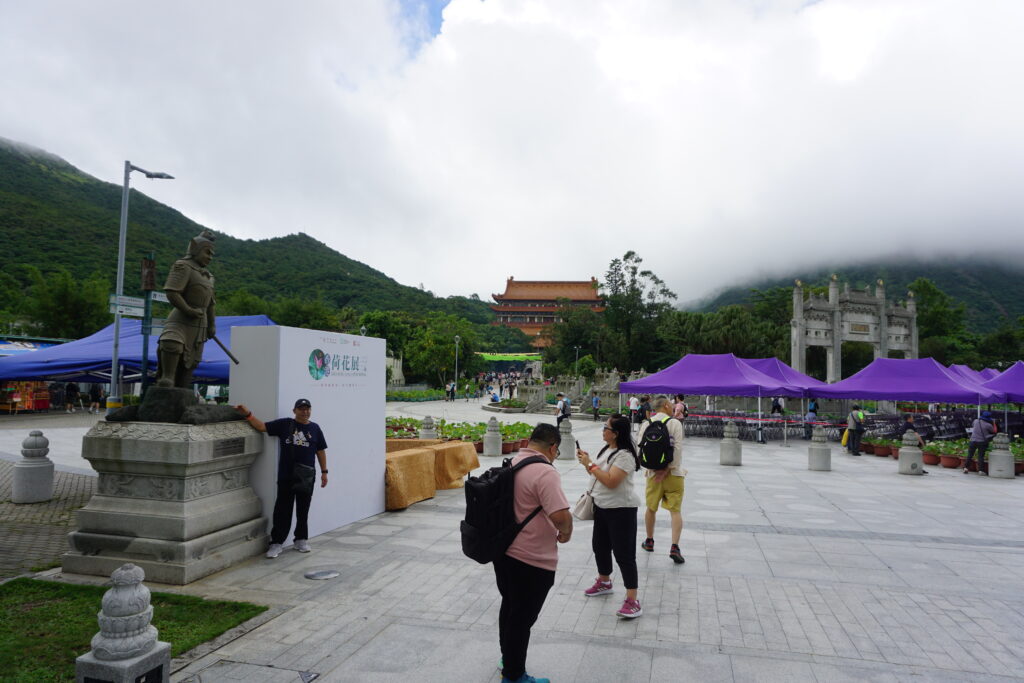
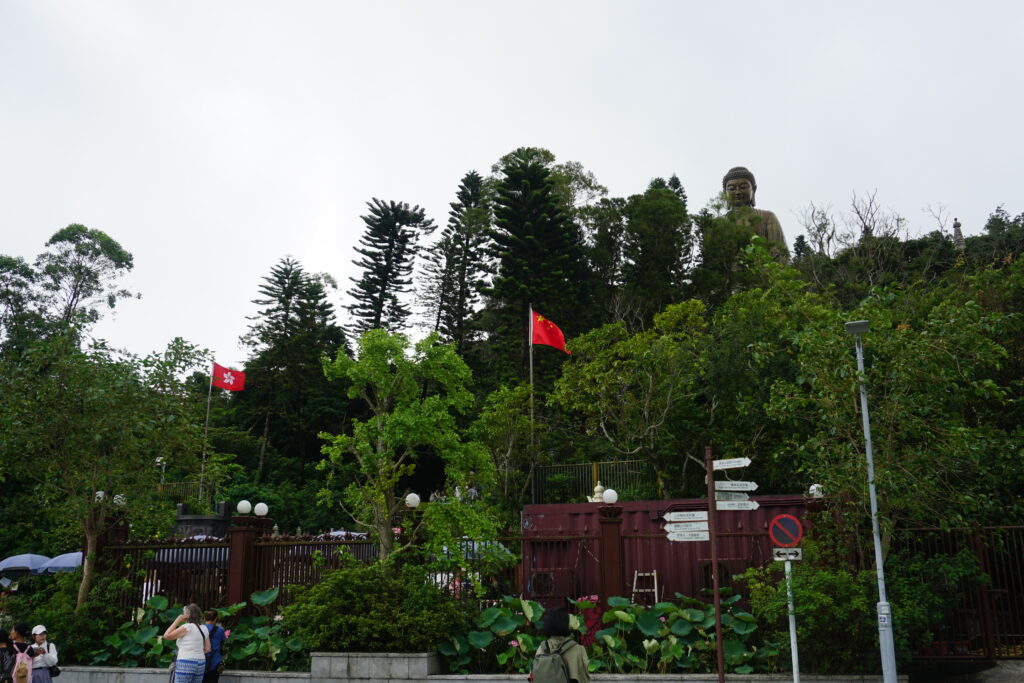
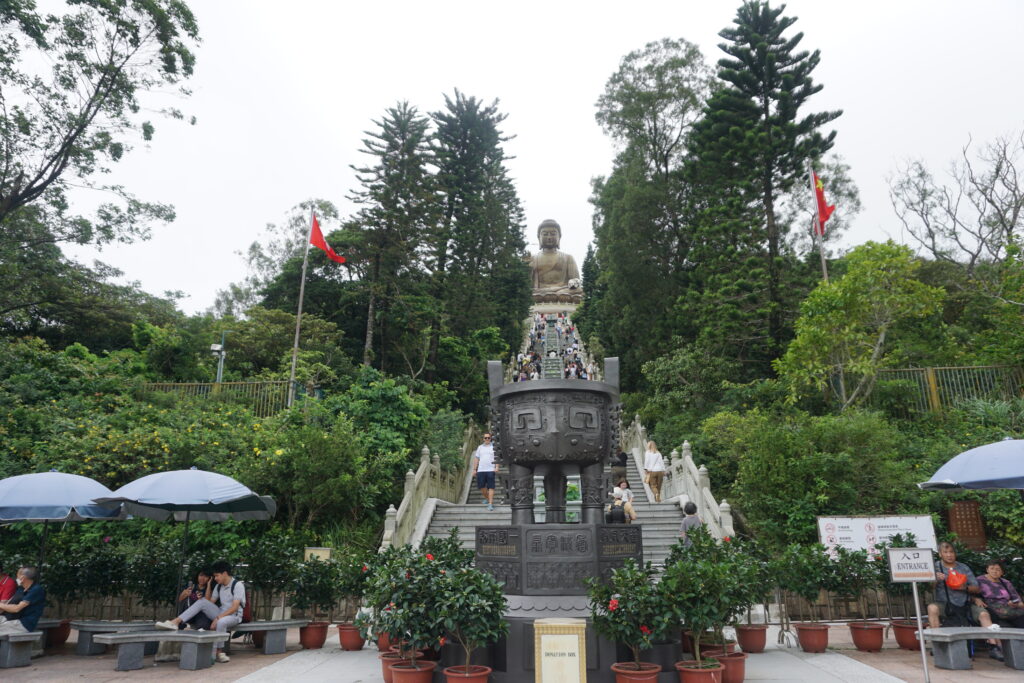
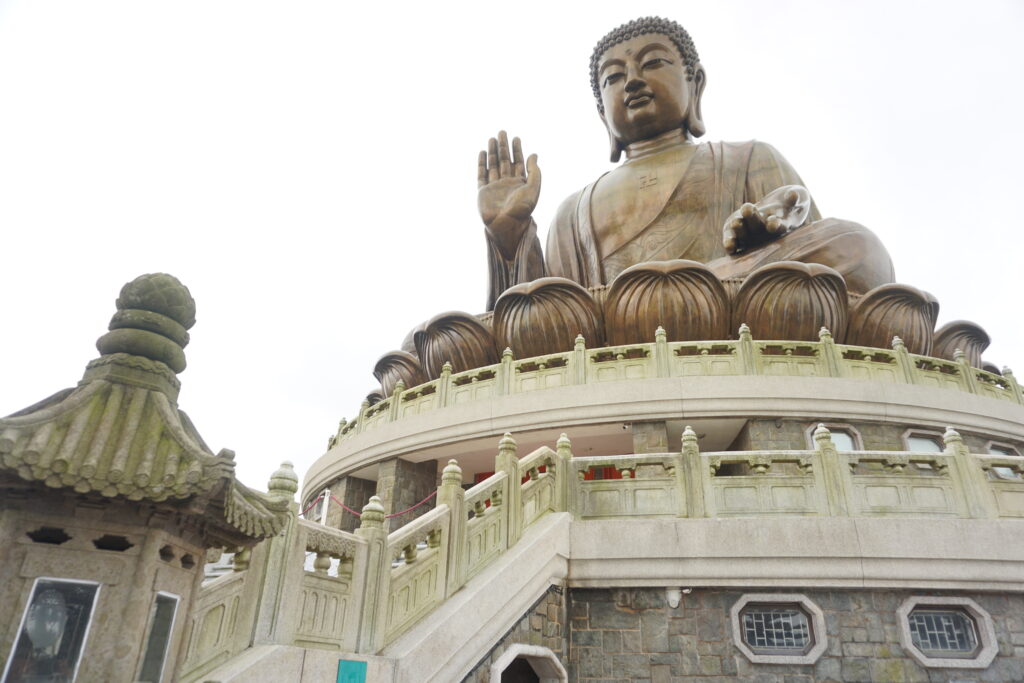
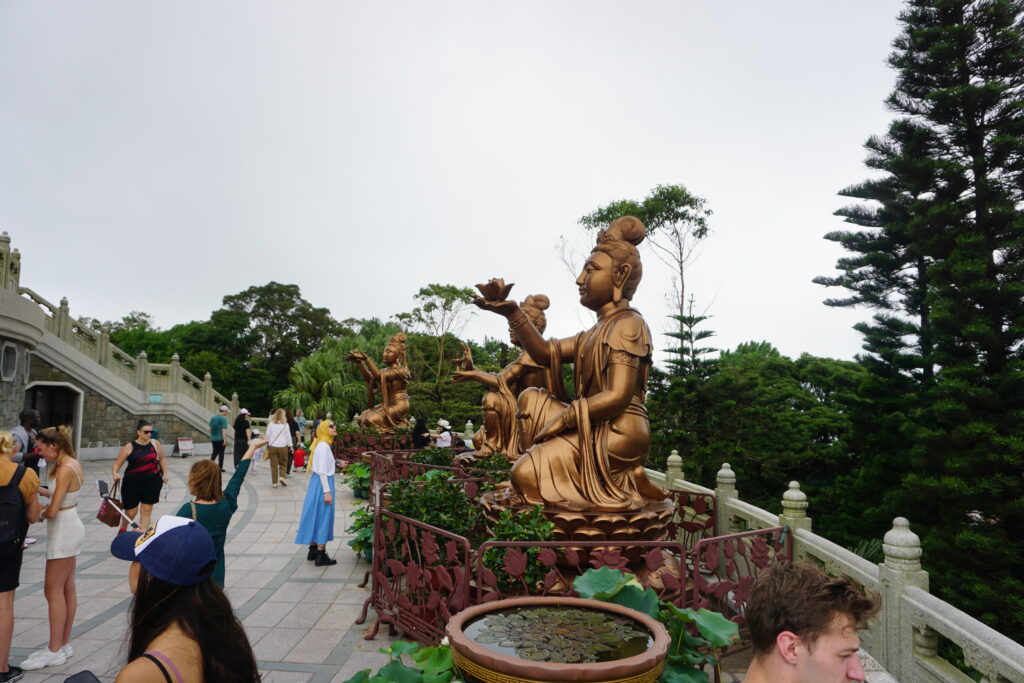
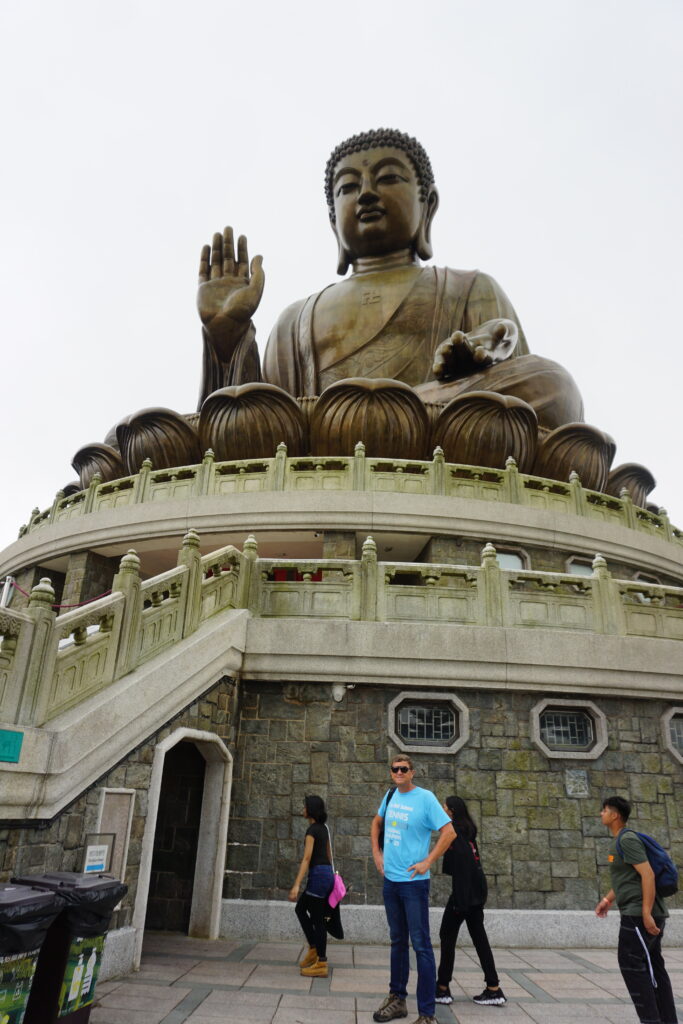
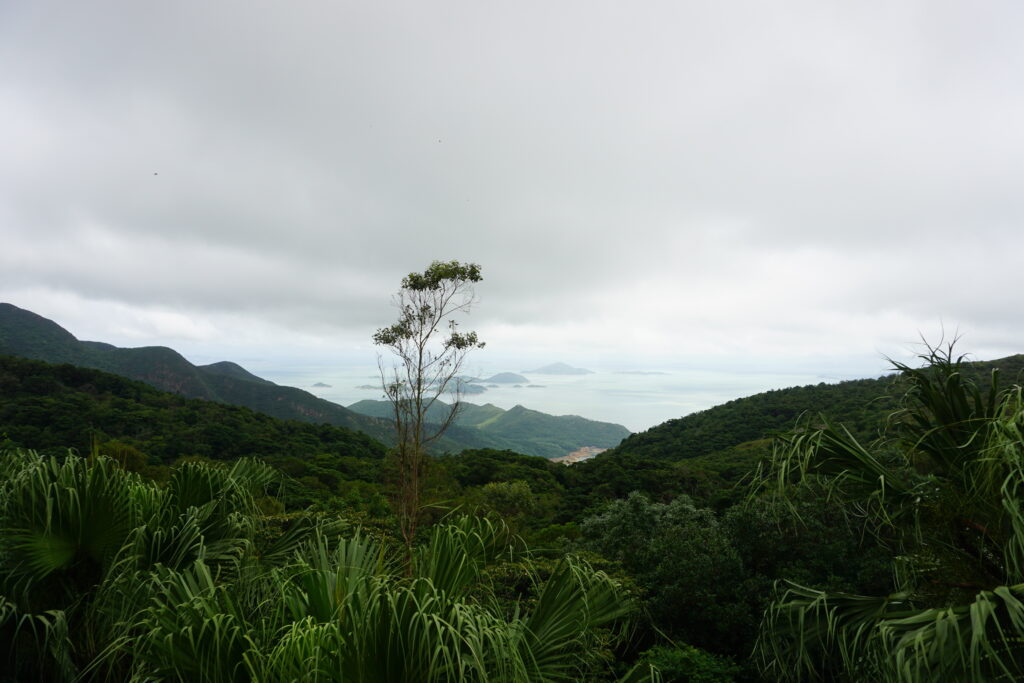
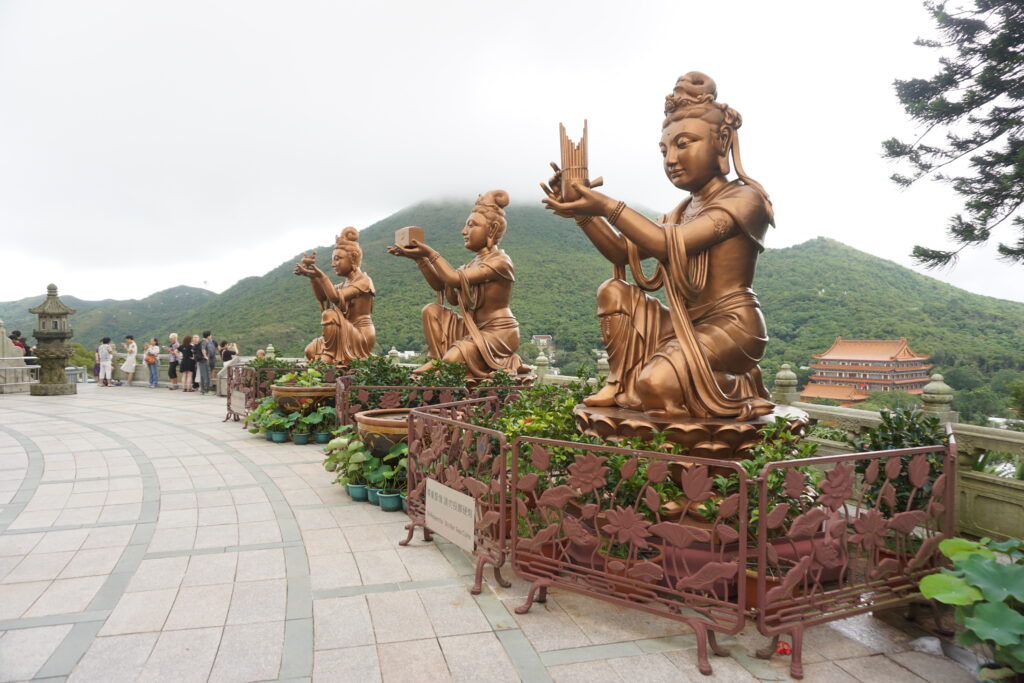
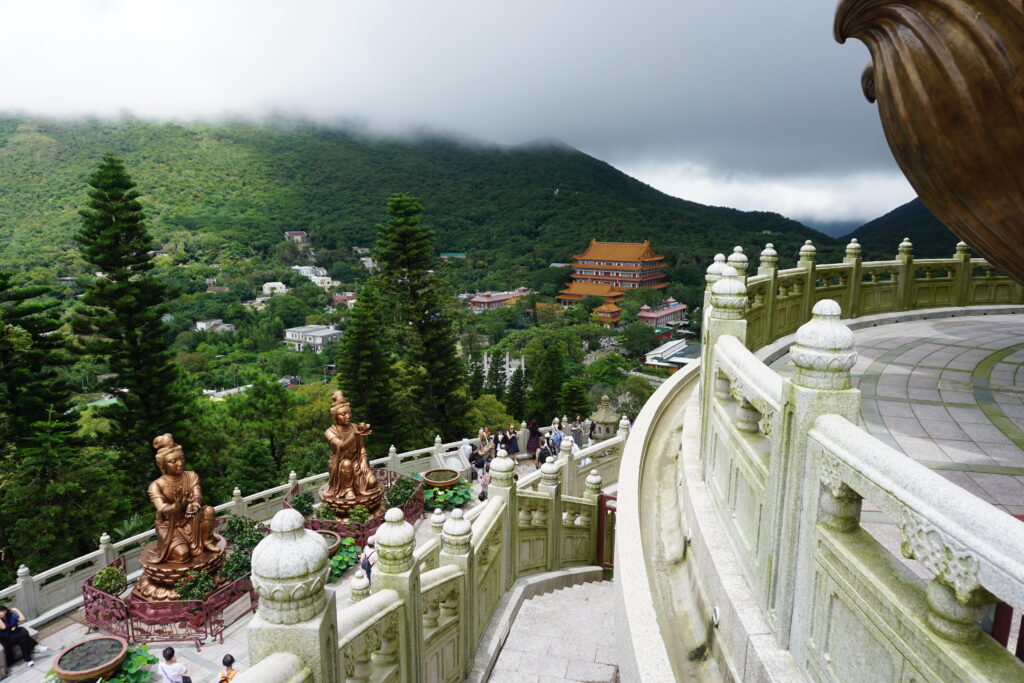
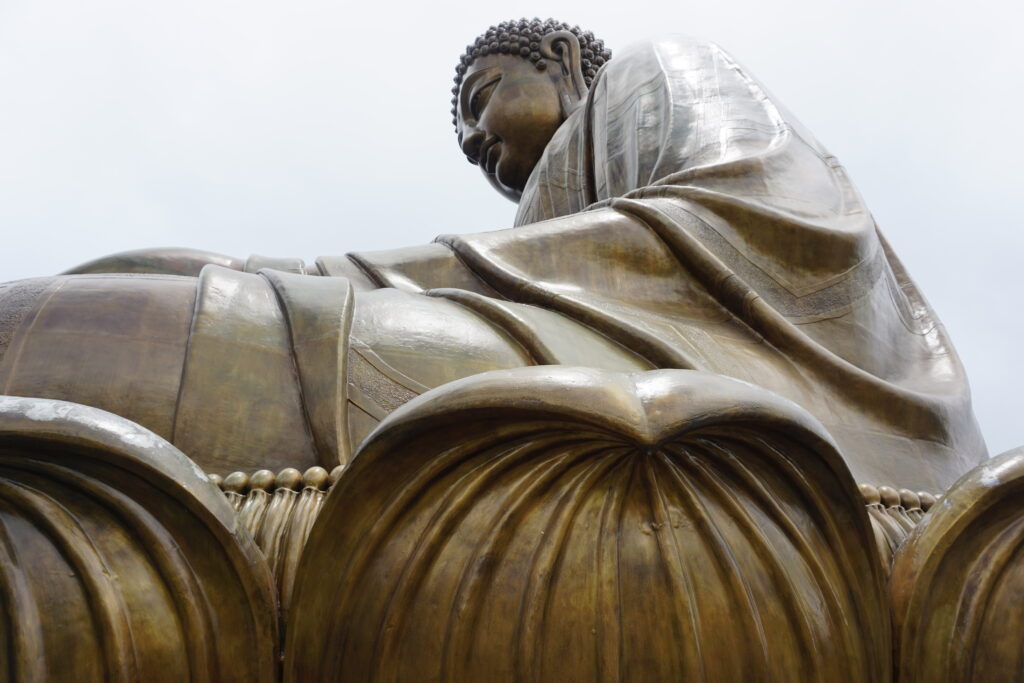
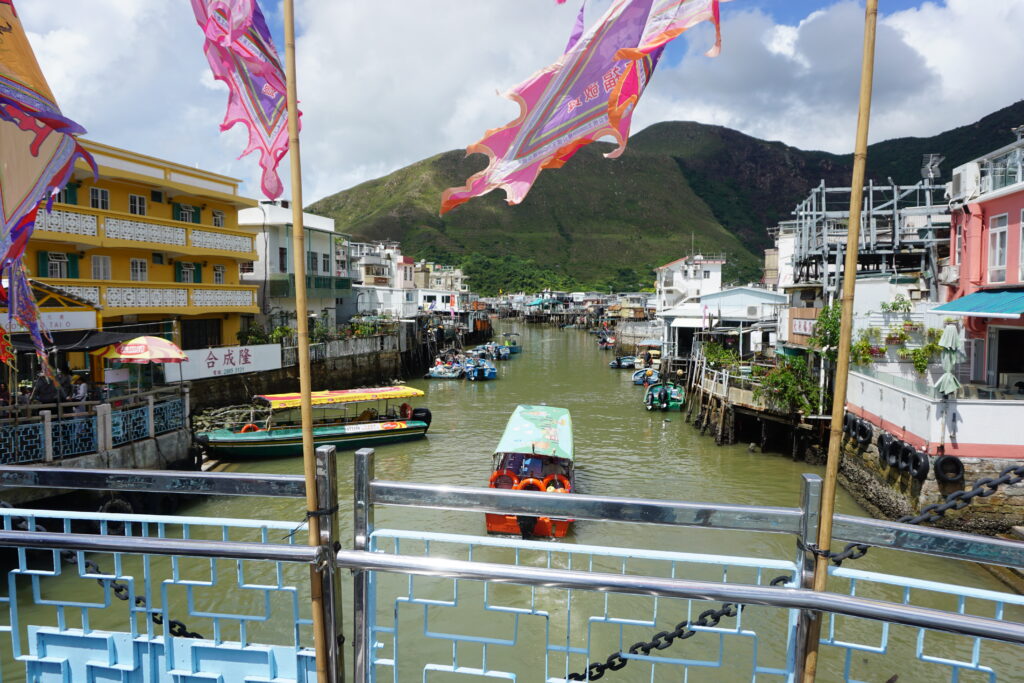
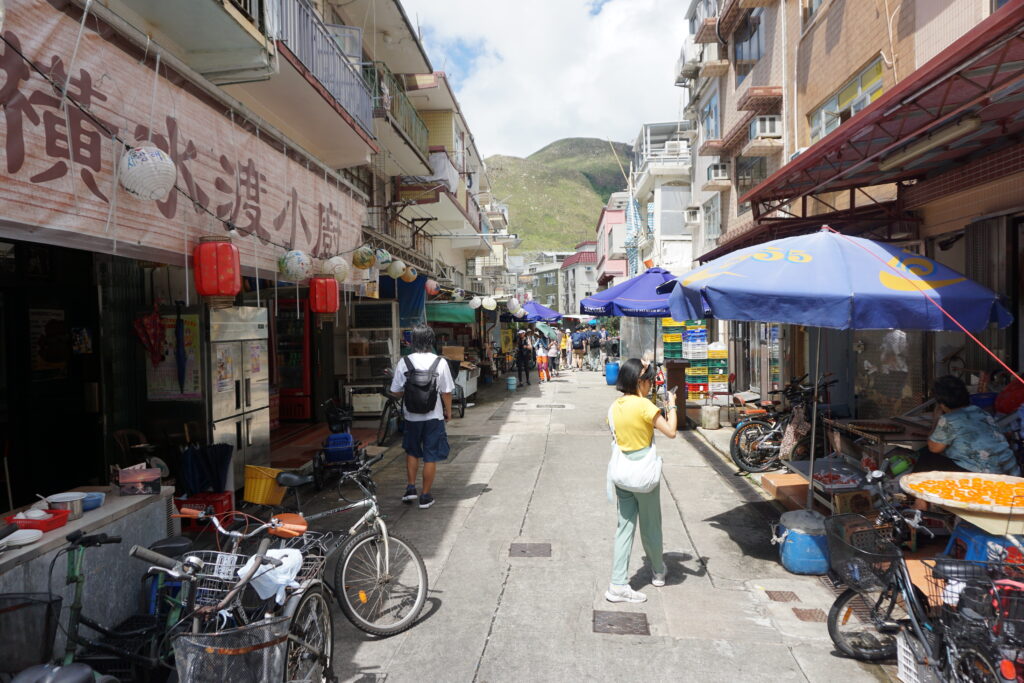
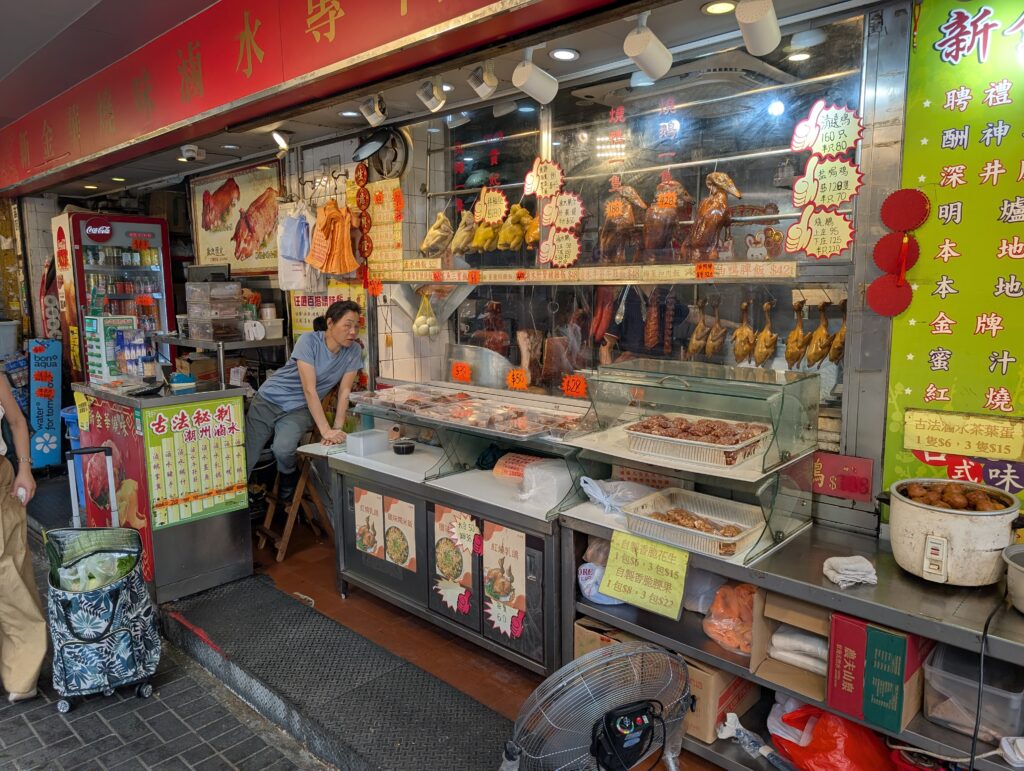
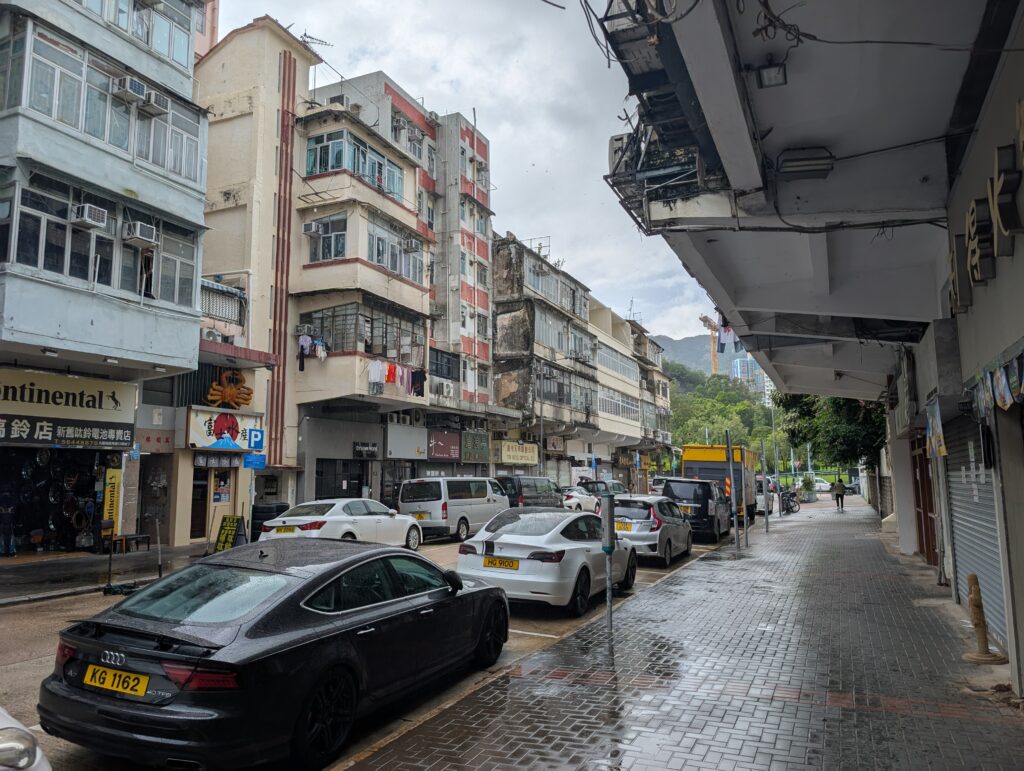
My favorite food stand near the hostel was closed by the time I got back to Causeway Bay, so I sat in a neighboring restaurant and had a small meal. I was up early the next morning, and ran through Victoria Park before collecting my things for a big day Sunday. I knew I wanted to attend worship, but had not received responses from any of the Churches of Christ I had contacted in Hong Kong. There are at least four. I wanted to use public transport to get to the border after church, cross at a land check point, then take the Shenzhen subway system to the airport there for my flight to Xi’an. The flight was about 1/5 as much from Shenzhen than from Hong Kong, so I thought it would be worth the extra hassle.
I decided to take a bus ride over an hour up to a church on the far northern edge of the New Territories (the land based nub of Hong Kong). I found an address where at one point there had been a church, and just decided to show up at about 9:30 and see if anyone was there. There were some ladies there, but worship was not until 10:30. I happily waited there in the air conditioned room, where I worshipped in a tiny rented room with a friendly and enthusiastic group of about 25-30 mostly Filipino guest workers. There was one part of a Sri Lankan family there and a couple of Chinese.
The service was in English, because that’s the closest they had to a common language. We sang a mix of older and newer songs. The church is completely self supporting, and the preaching is done by members on a volunteer basis. A man named Don Thornton had planted the church here in 1978, and had just left for Alabama for health reasons in January of 2025. We had a sermon that resembled a Bible class on a part of the Proverbs. Our kind brothers invited me to stay for a meal. The Sri Lankan family gave me contact information for a church outside Colombo that I visited when I made it to that leg of my journey.
Our meal was a Filipino fish head and rice dish. The meat flavor was good, but there were a LOT of bones to fish out! I was happy for the chance to worship, happy for the interaction with brothers and sisters in Christ, and happy to share a good meal. It was a great experience. The rest of the congregation planned to stay for another Bible study at 2:00, but I thought it best to head for the airport, since my flight was scheduled to leave Shenzhen at 6:15, and I wasn’t sure exactly what to expect with the border crossing or if the transportation to the airport would be smooth once I was on the Chinese side of the border.
After another half hour bus ride to the border, I made it through in less than an hour. I was delayed slightly for having a couple of Machu Picchu and Vinicunca stamps in my passport. The Shenzhen subway uses the same cards to pay as the Hong Kong MTR. Apparently, that Octopus Card works in most Chinese municipal transportation systems. The subway looked nice, but it was loud and I could not hear the announcements. Surprisingly, some of the information was still presented in English. I made it through security and was at the gate with about two hours to spare, just in time to learn that my flight was delayed another hour and a half. The airport was cool, and there wasn’t much else to do but wait. I bought a Coke so I could ops check my Alipay account. It had not worked when I had tried to use it in Hong Kong, but it worked fine in China. That was good to know. I was now in mainland People’s Republic of China. I would sleep that night in Xi’an.
